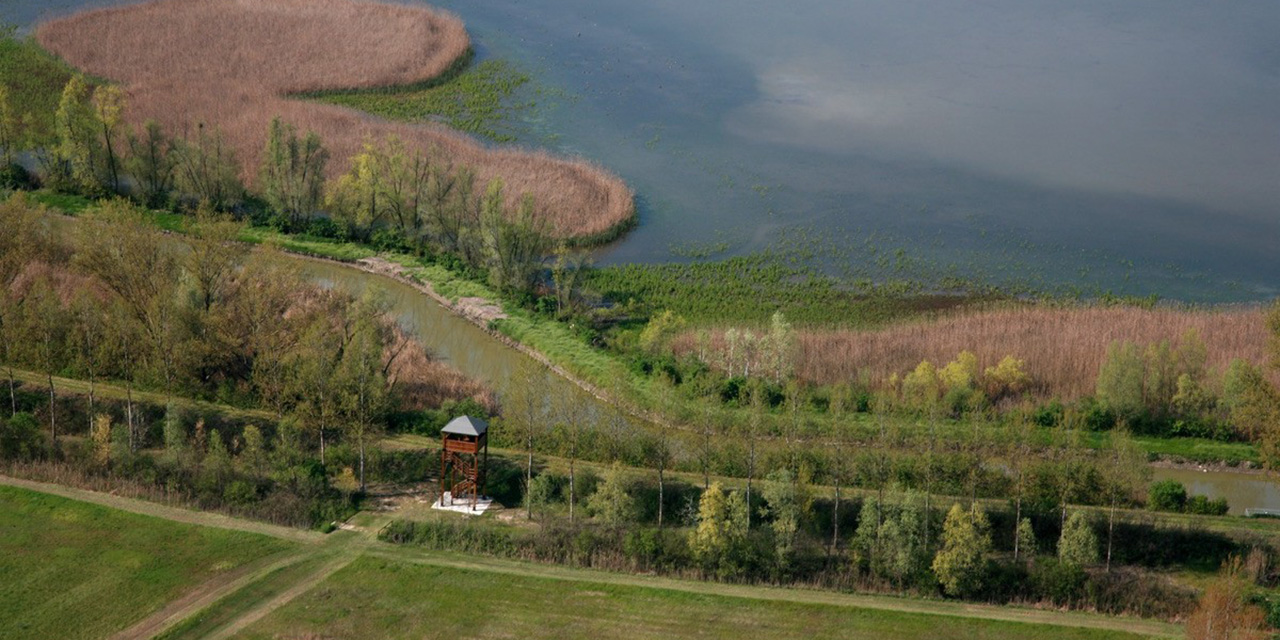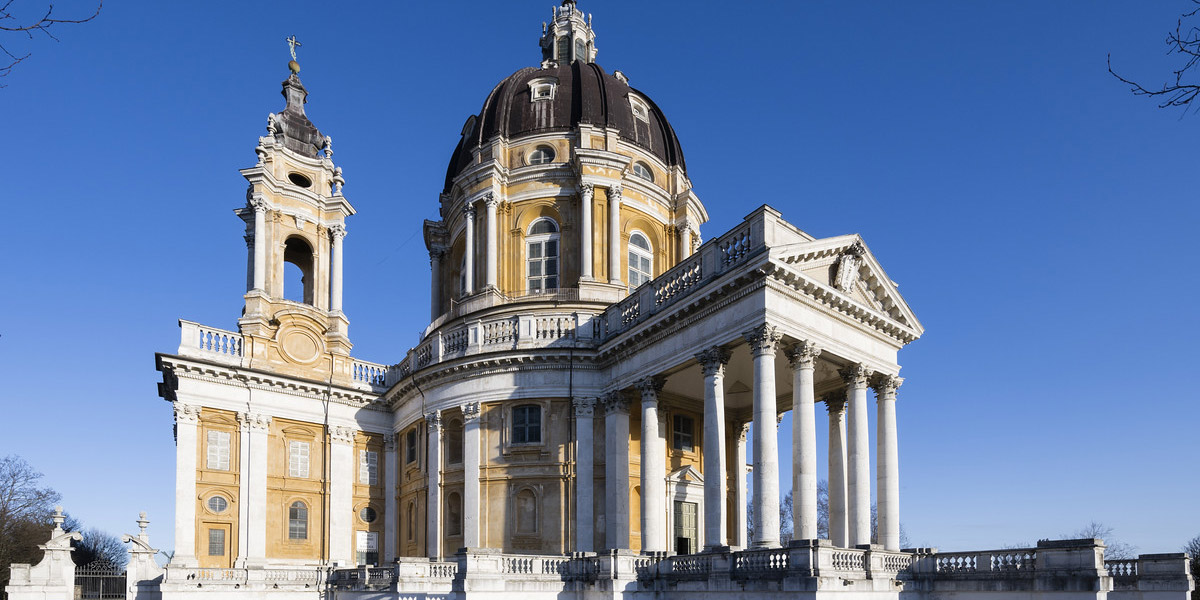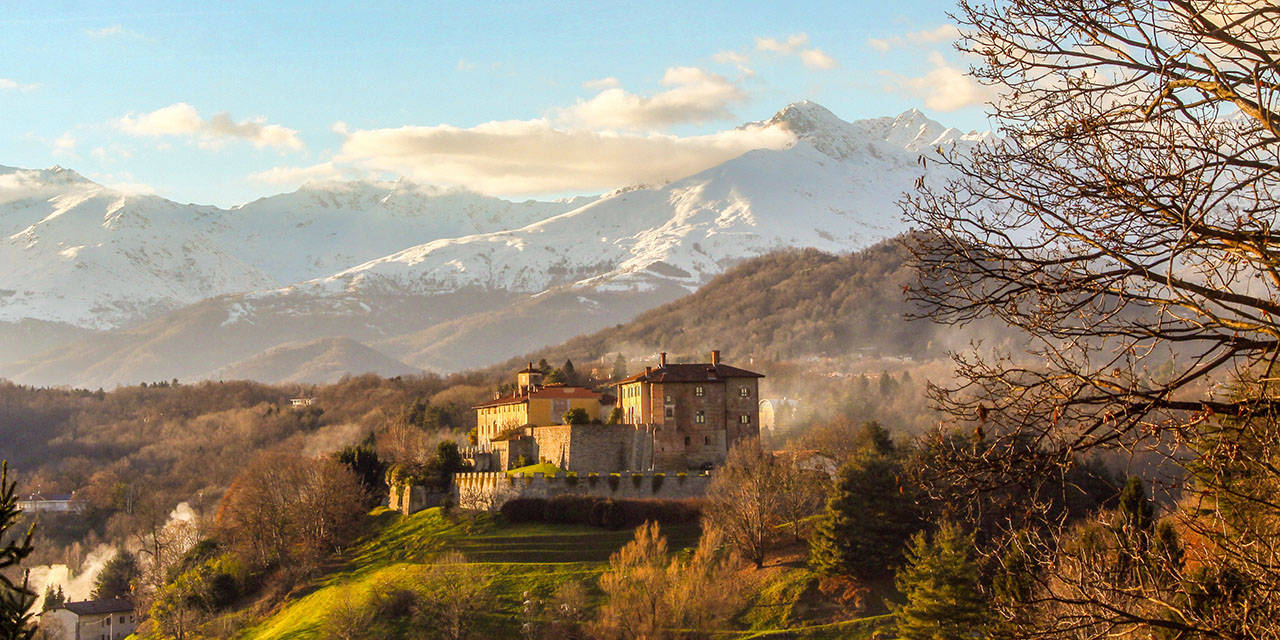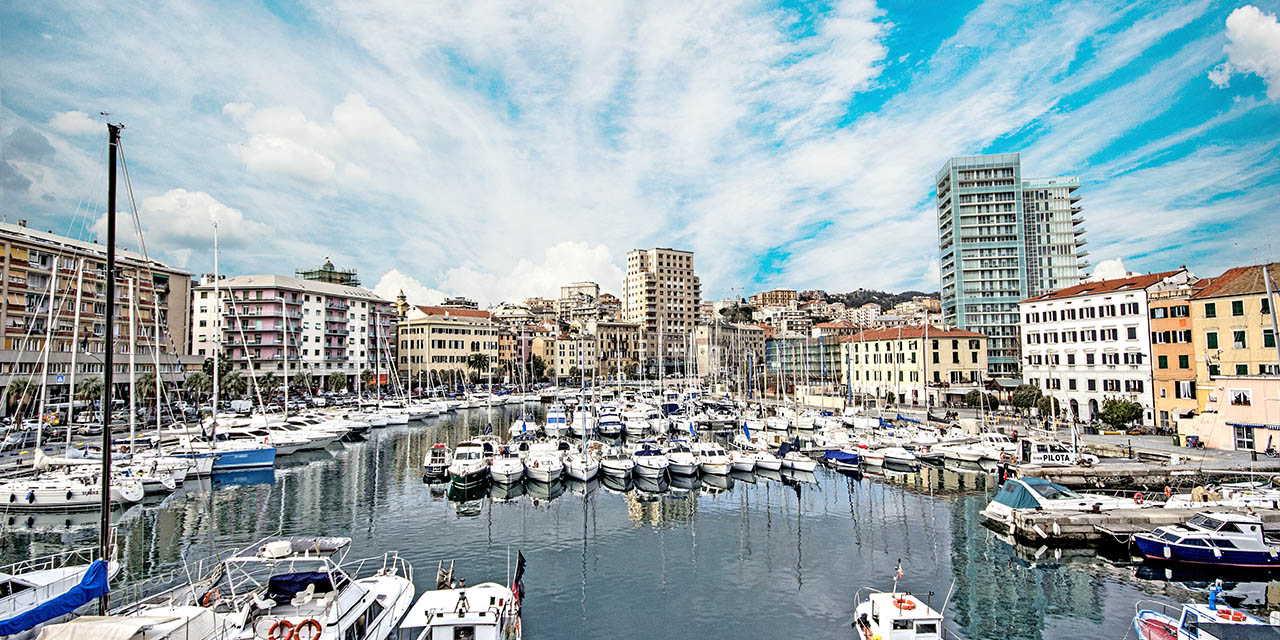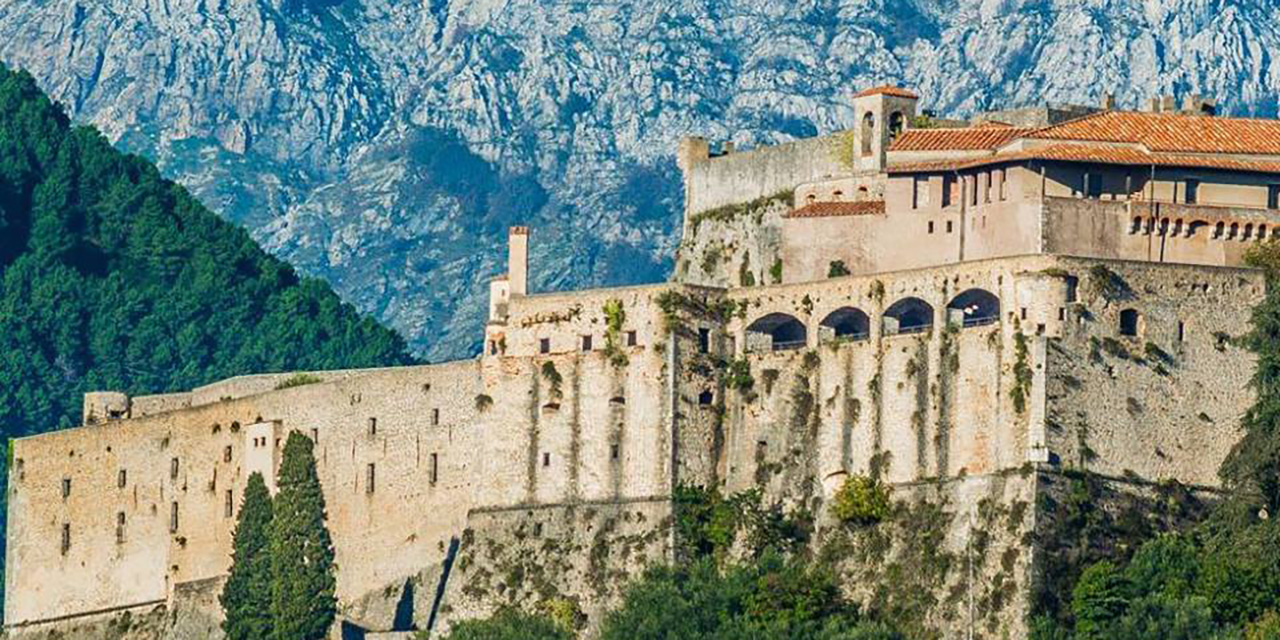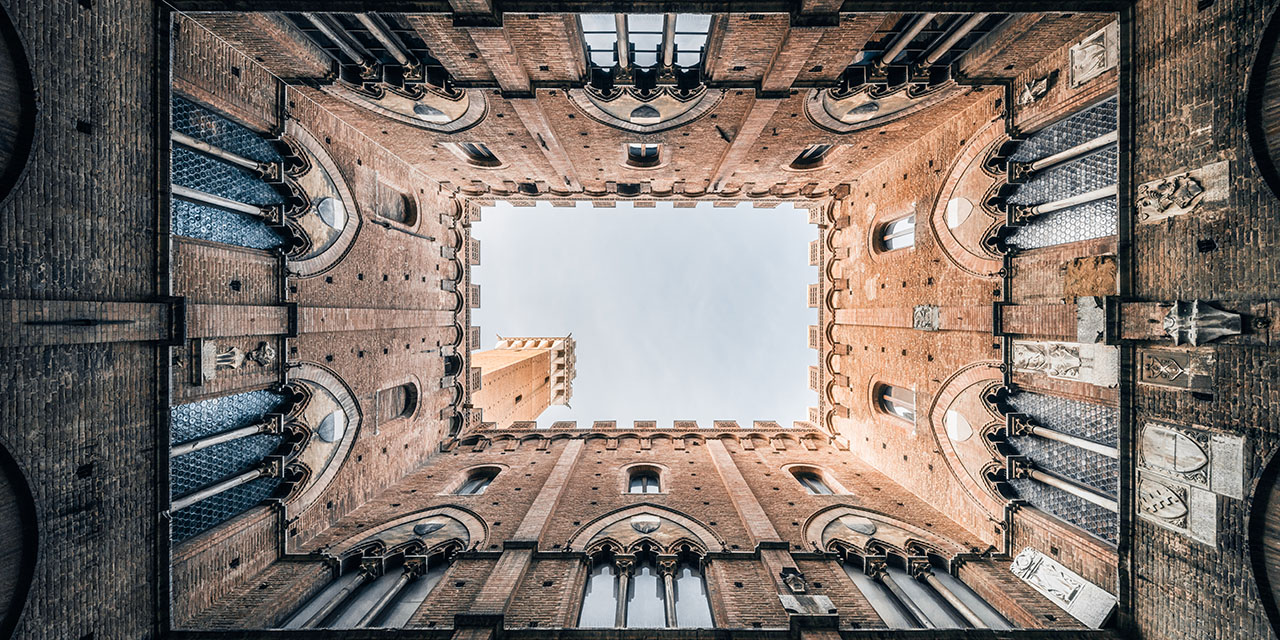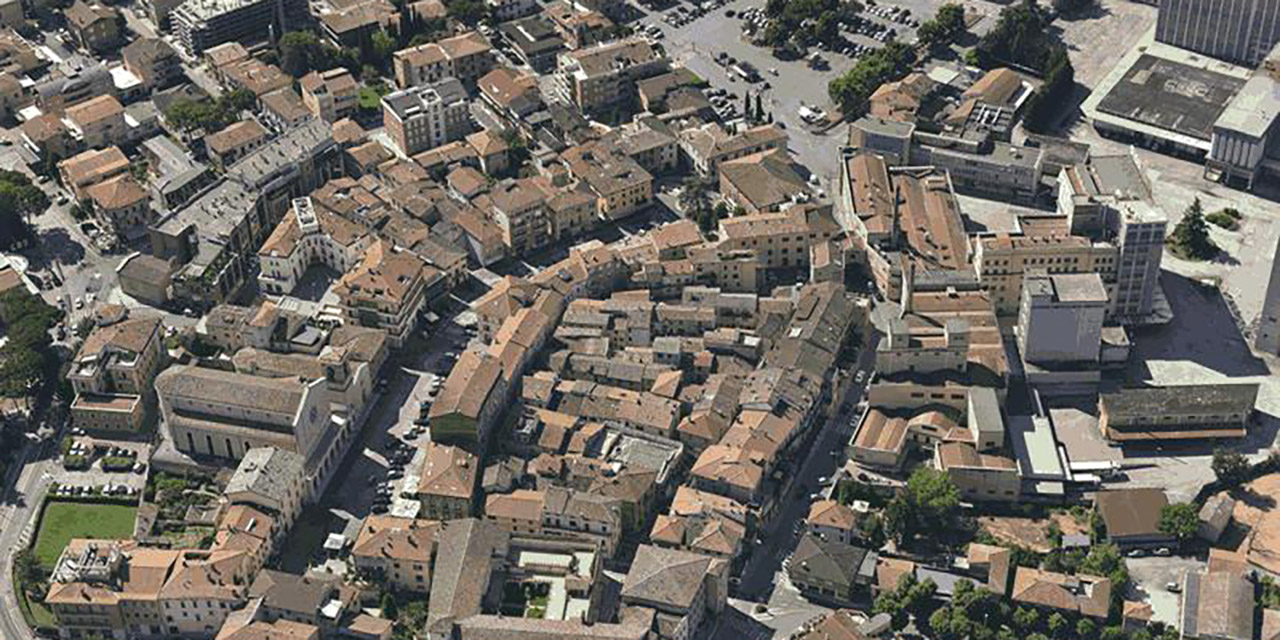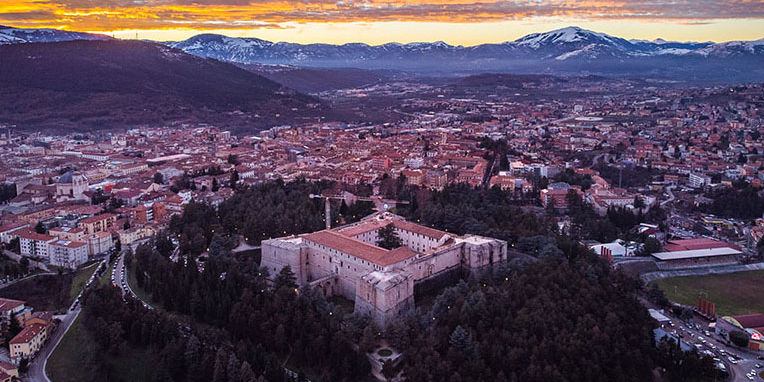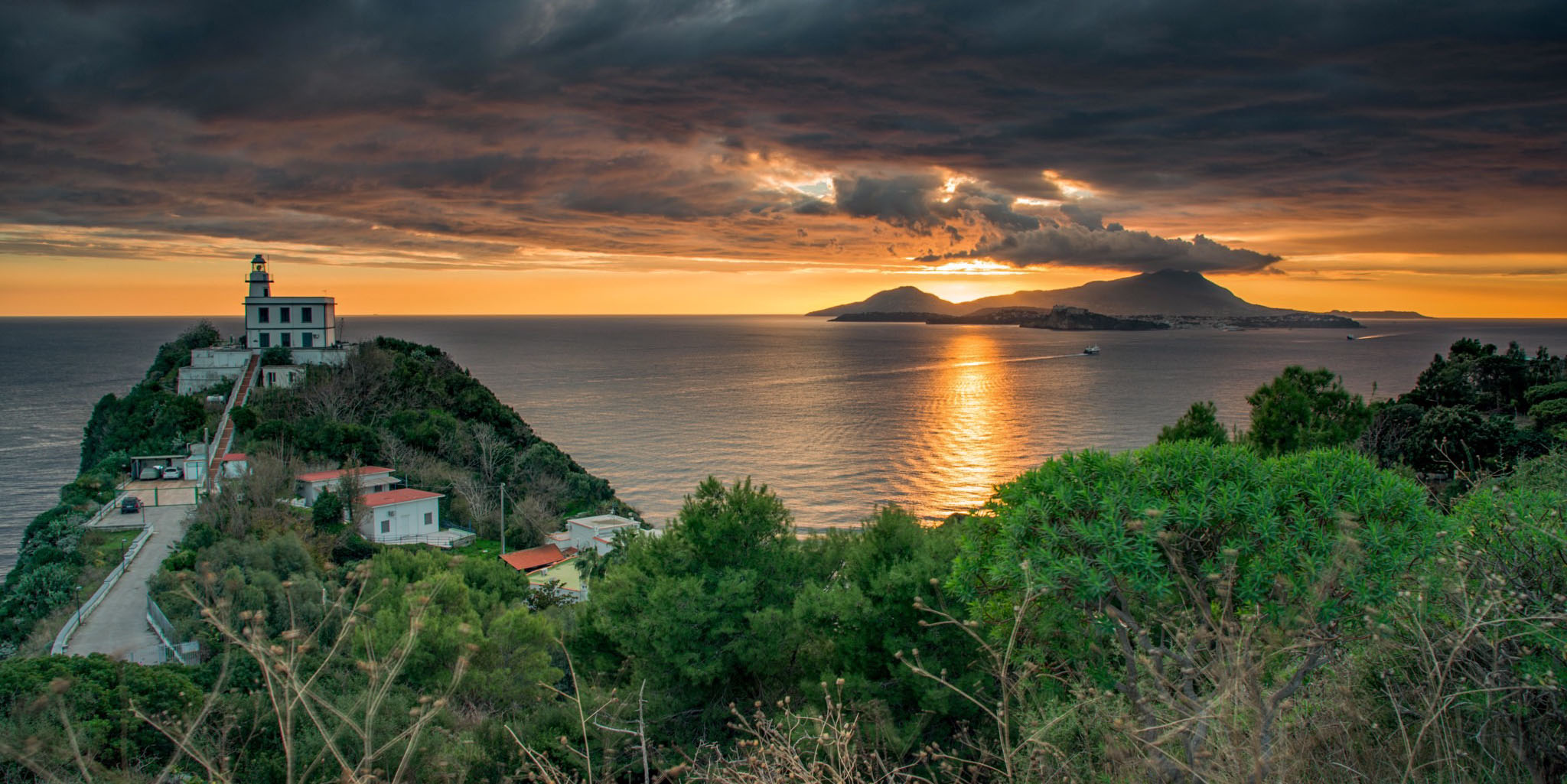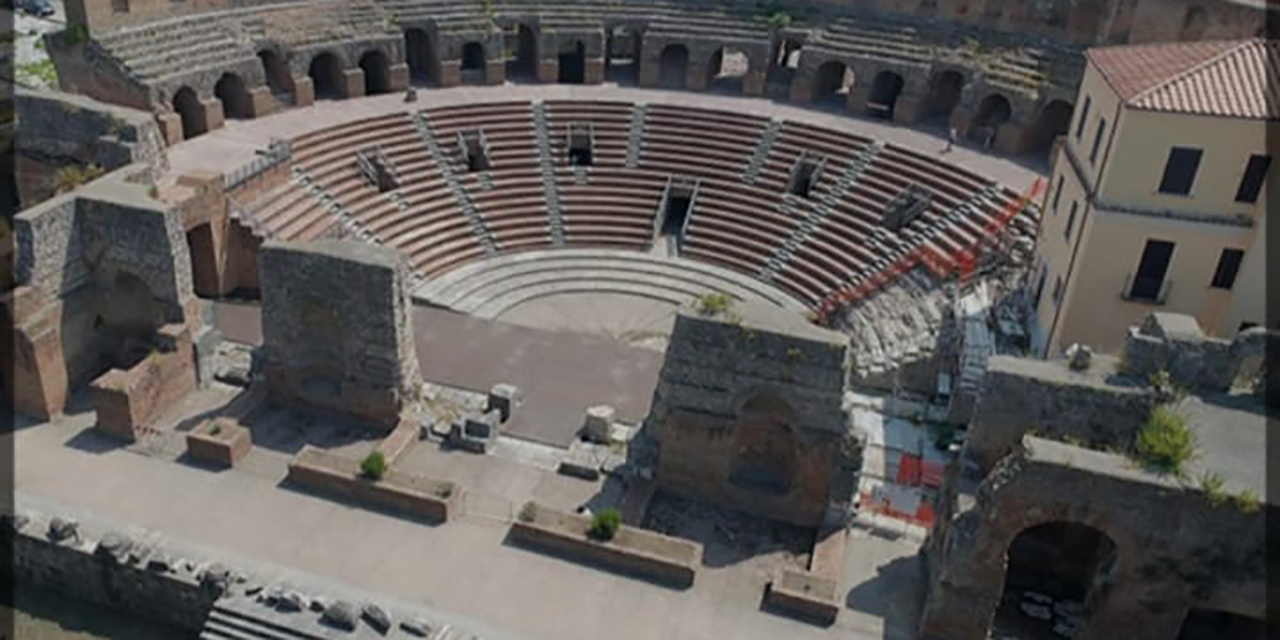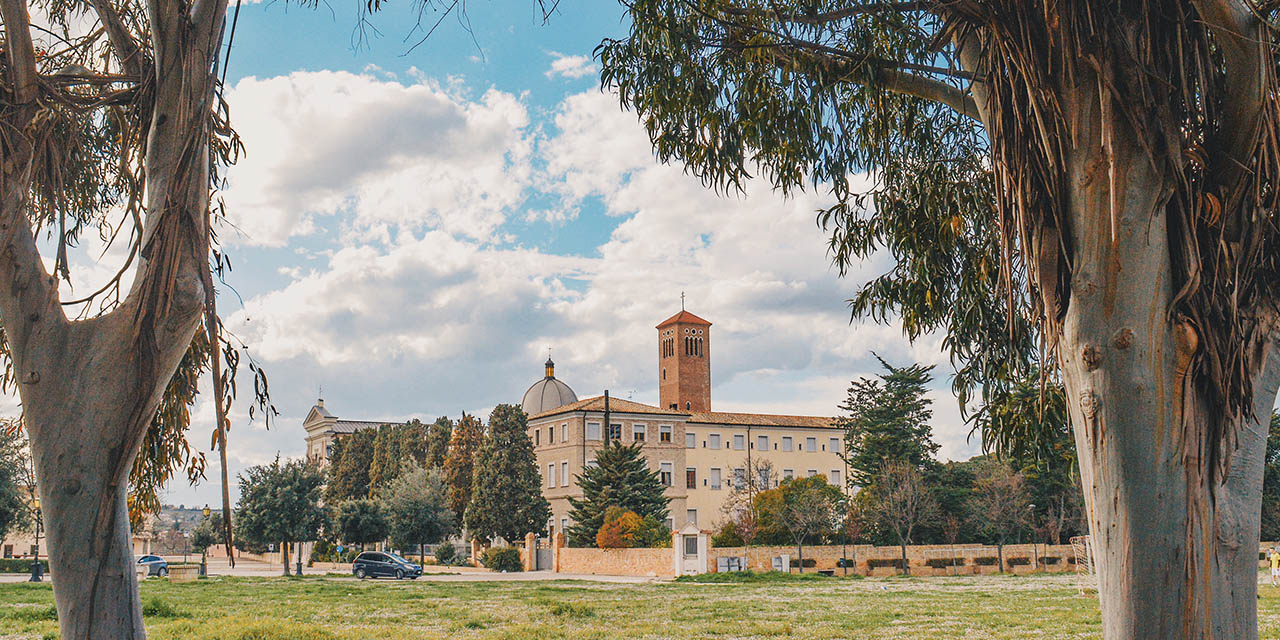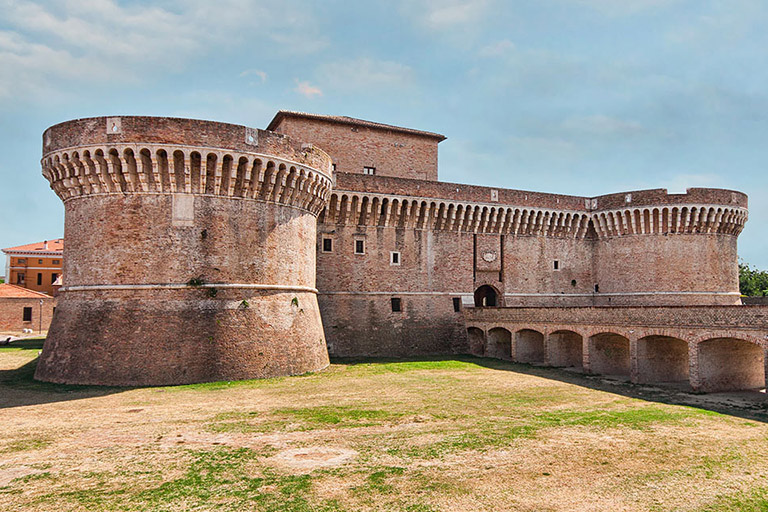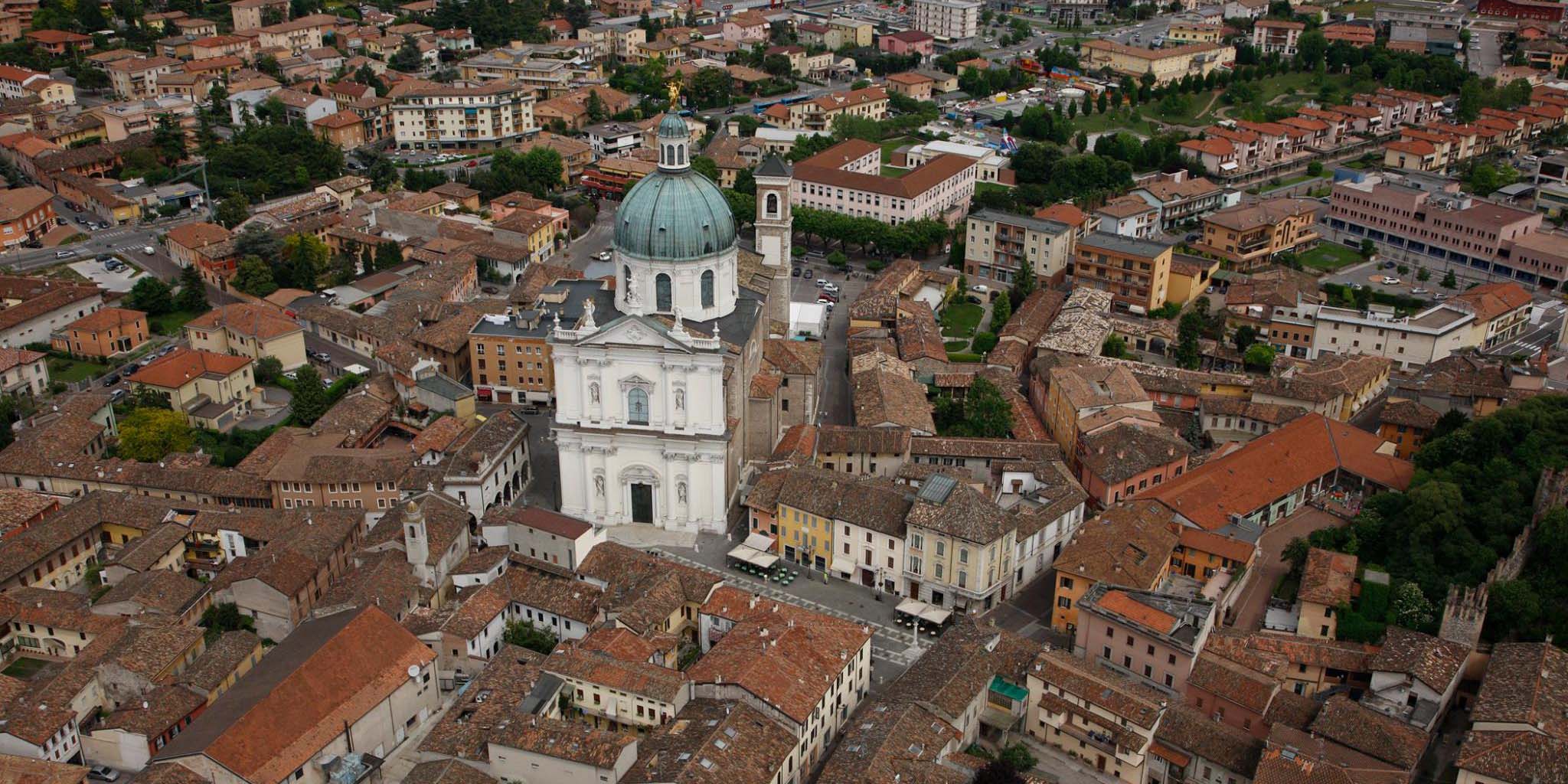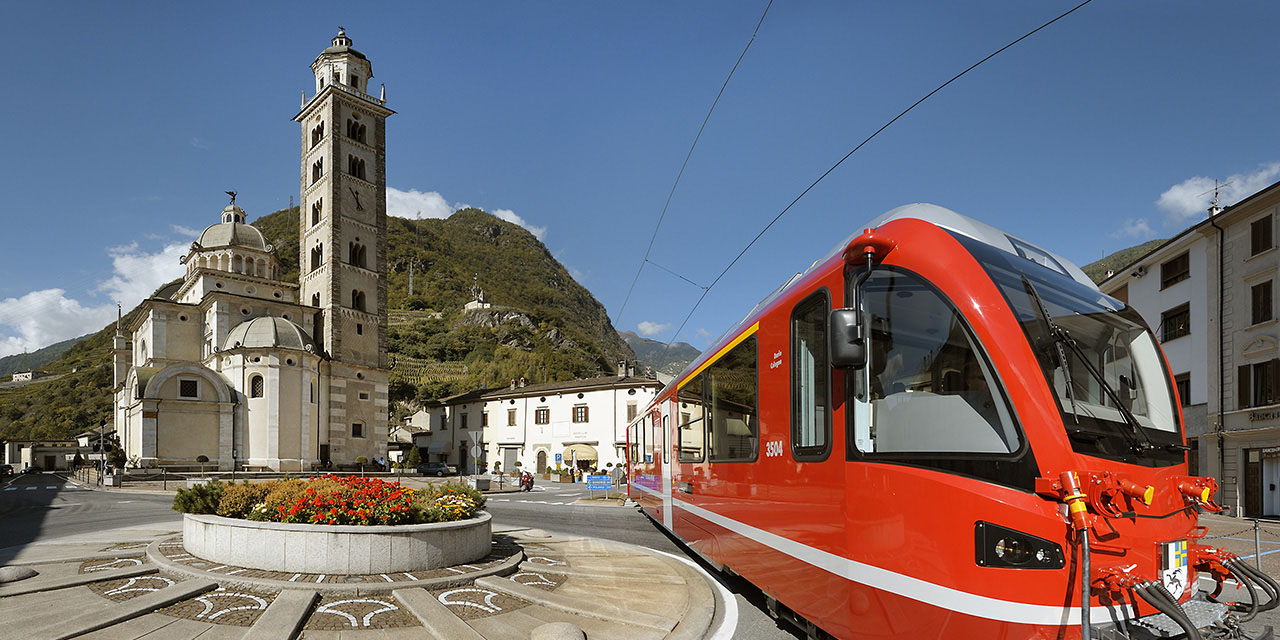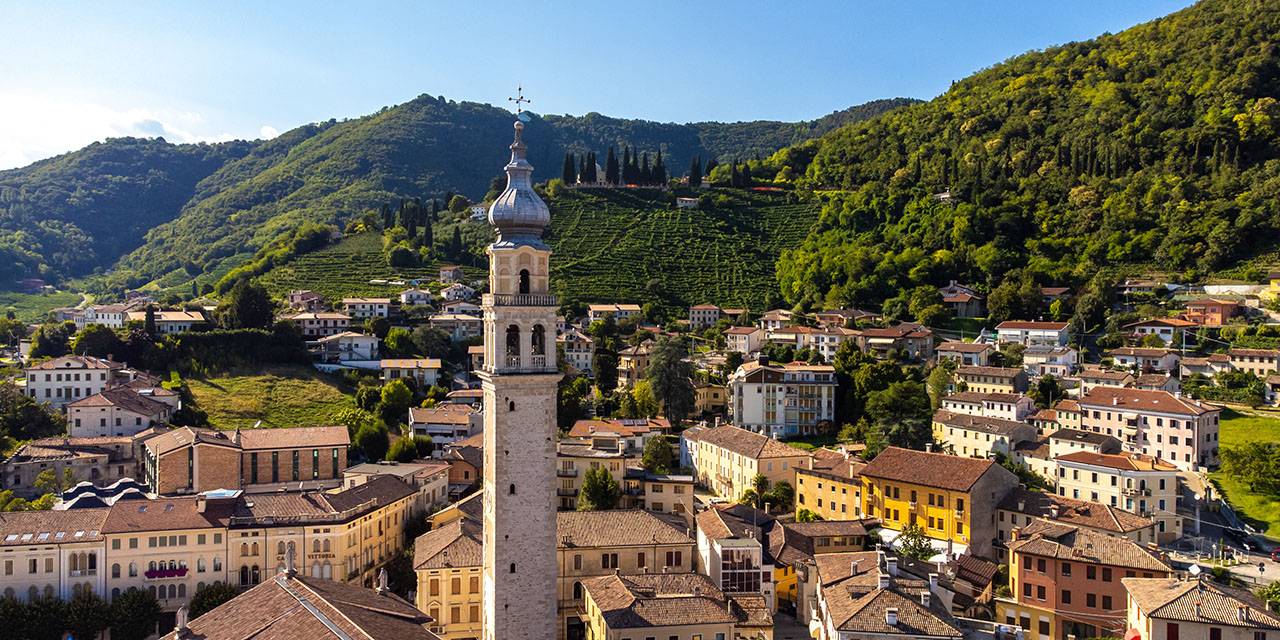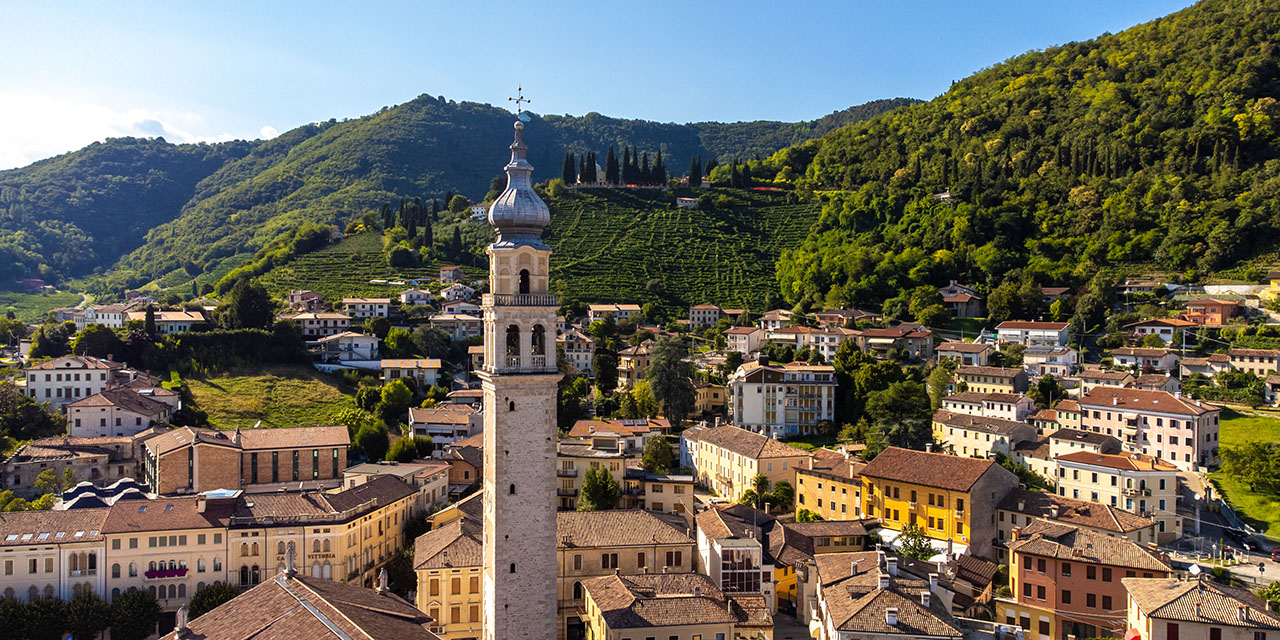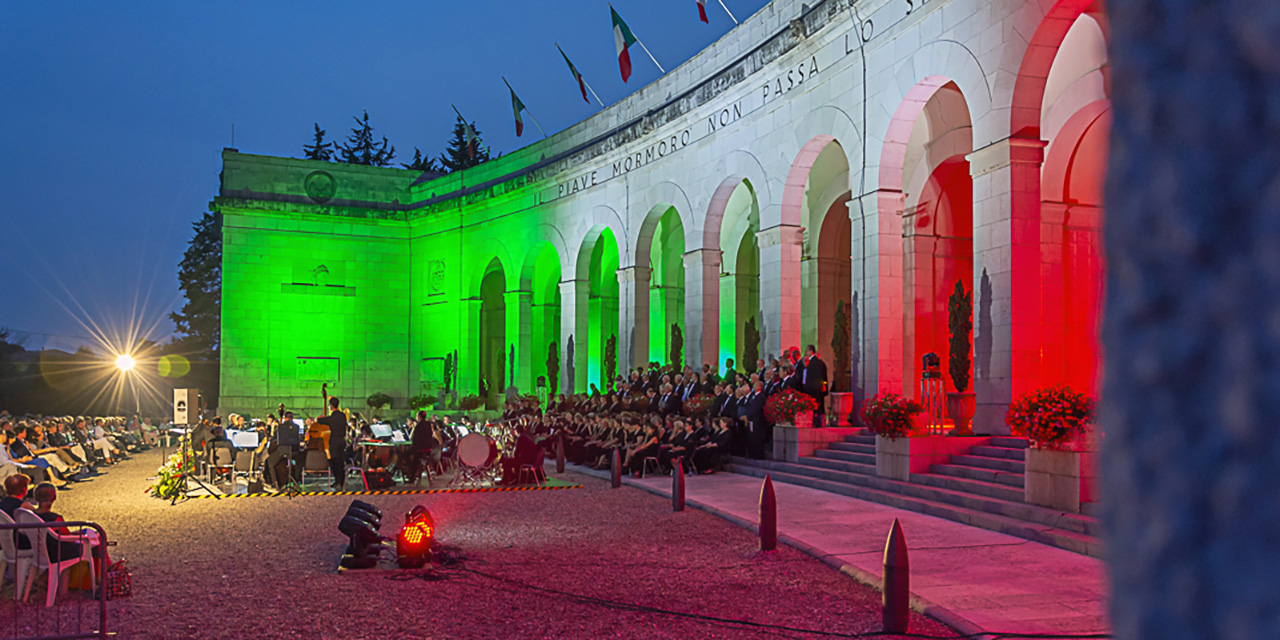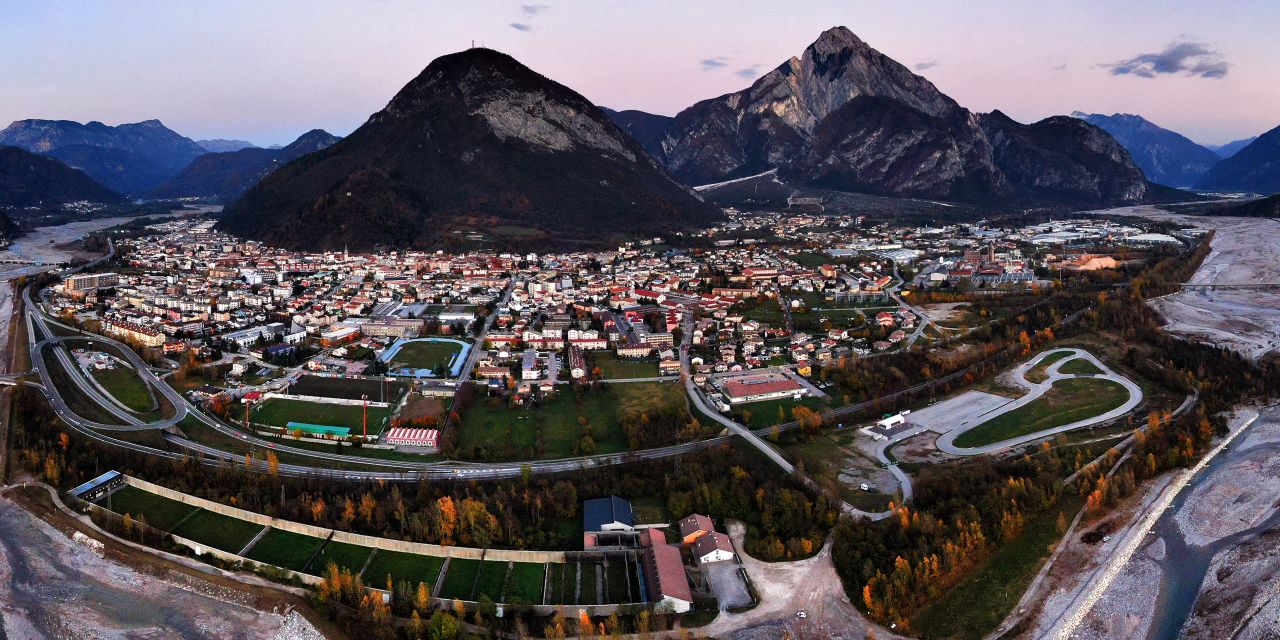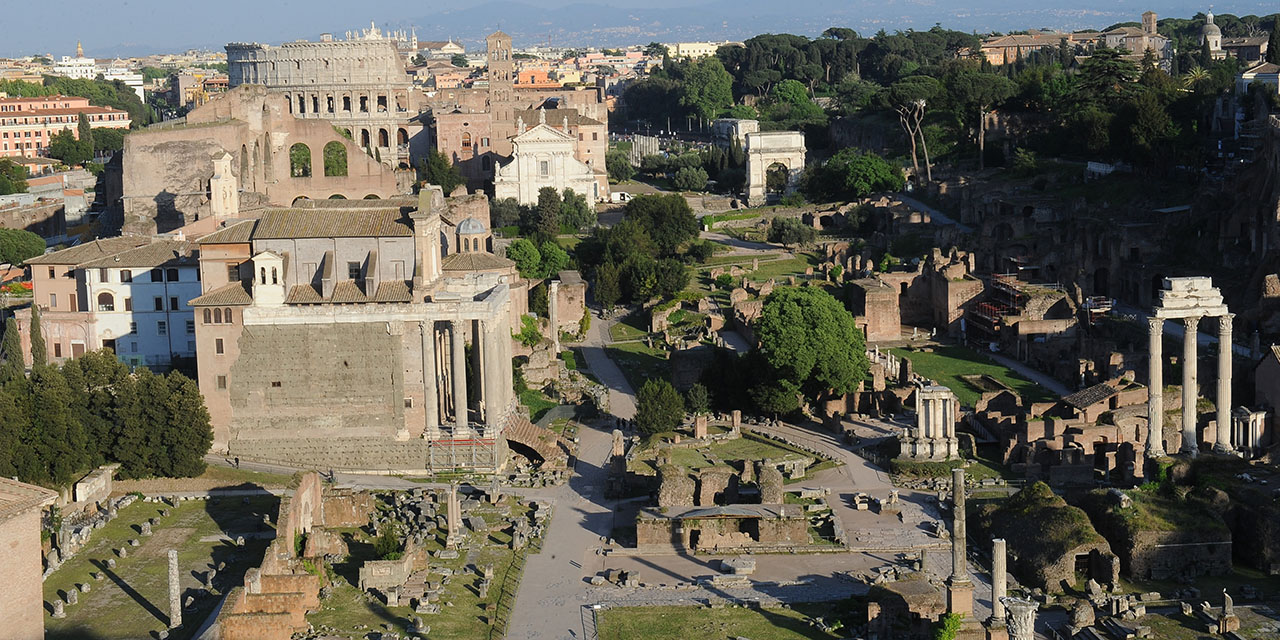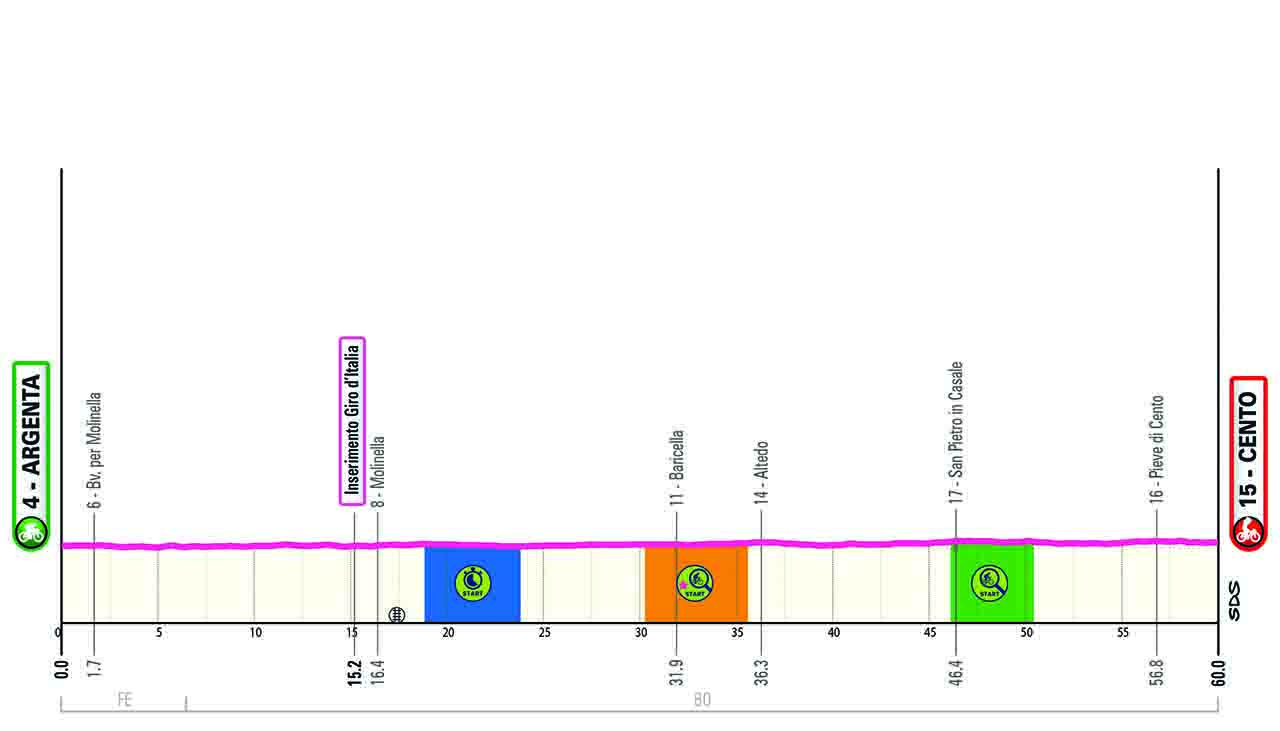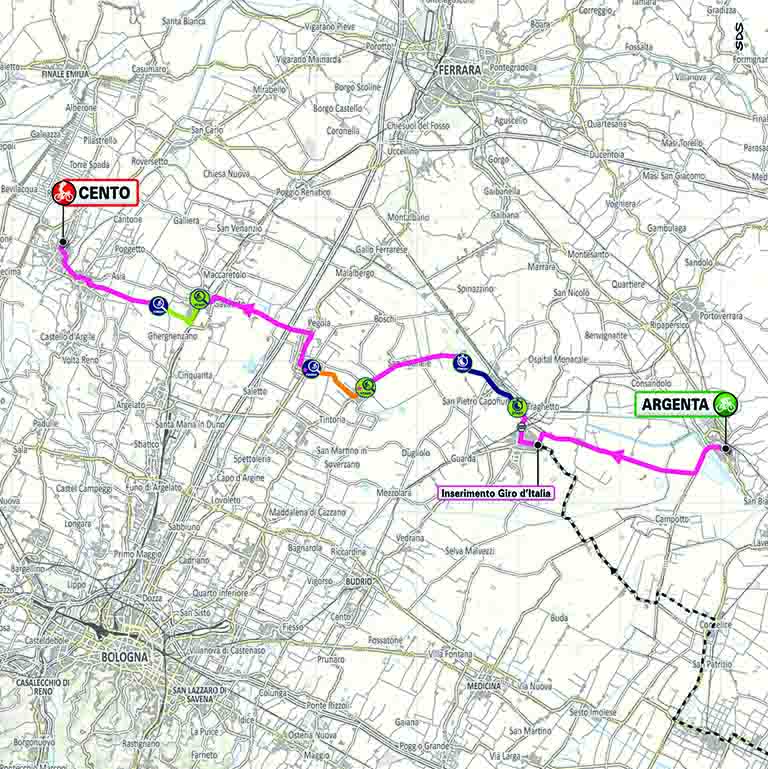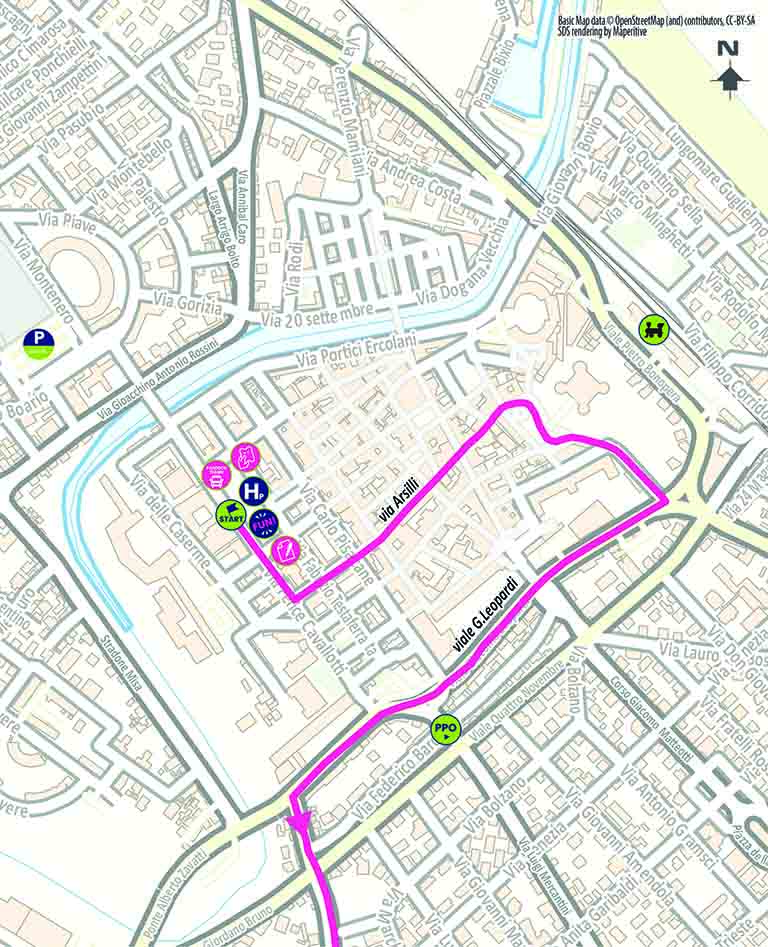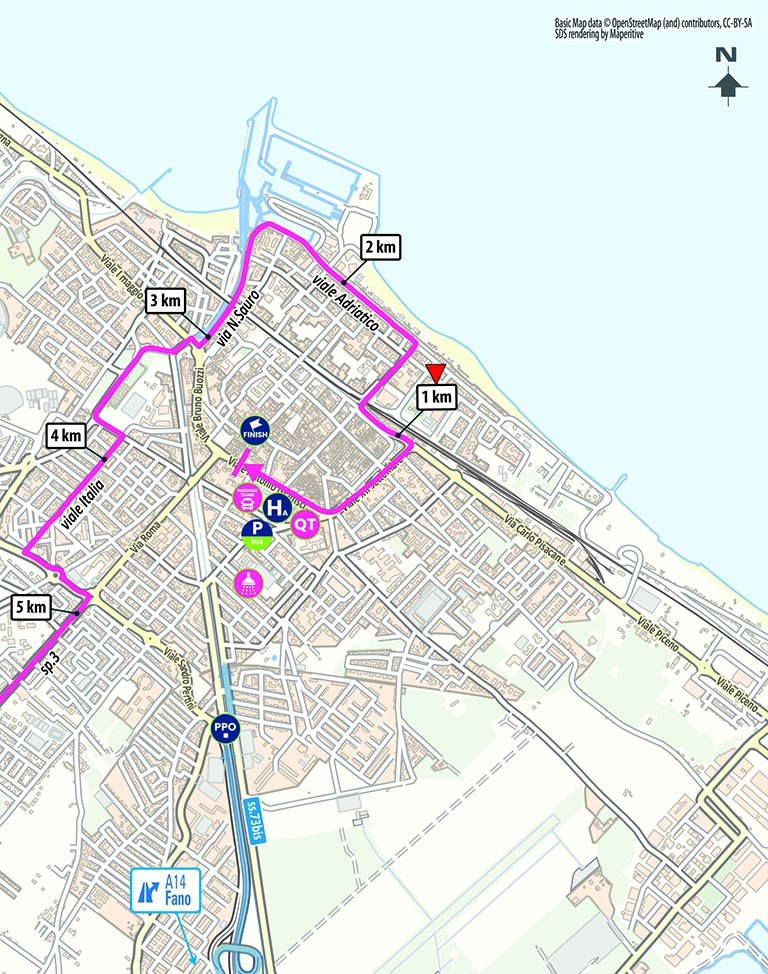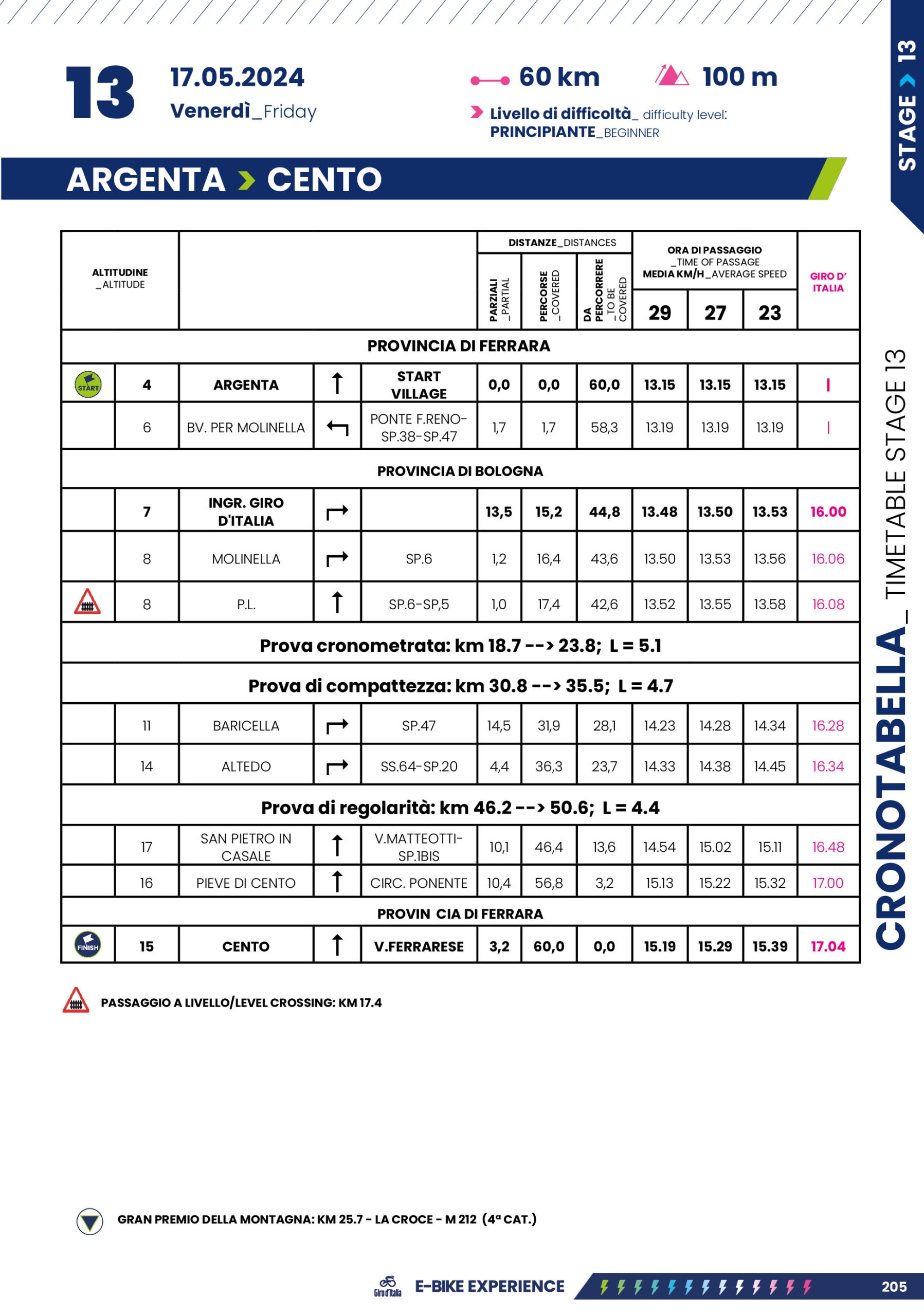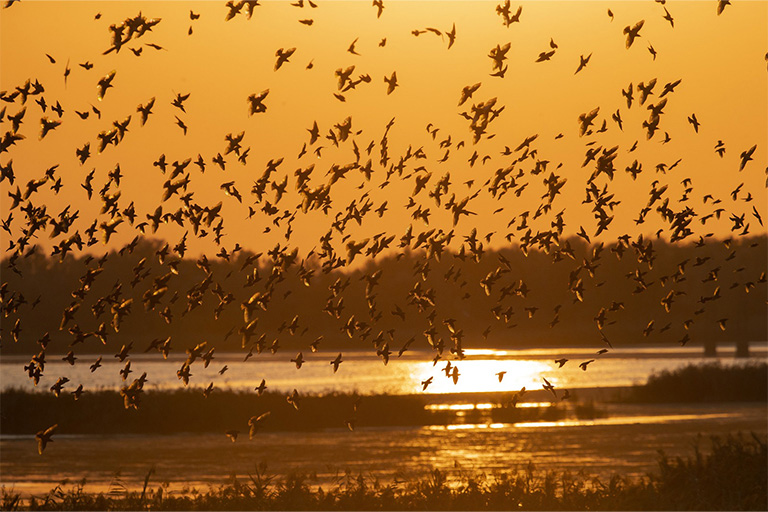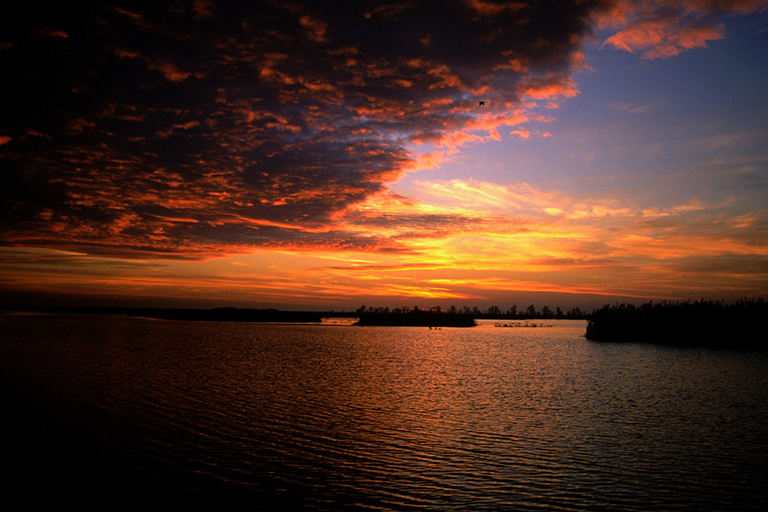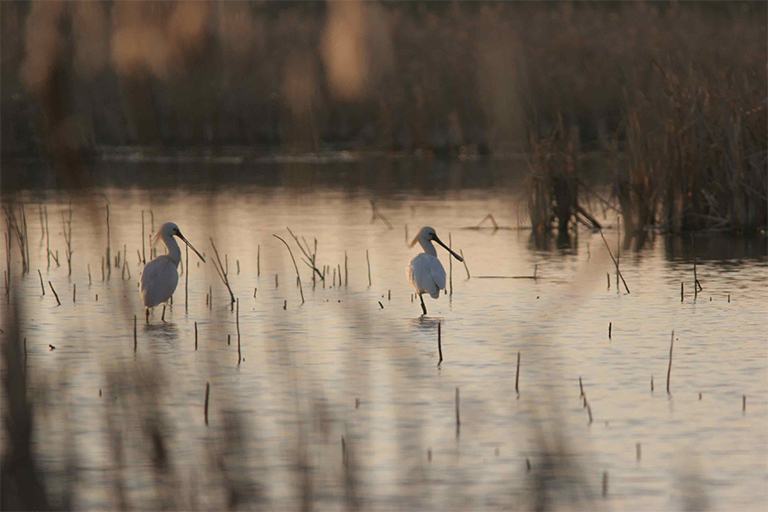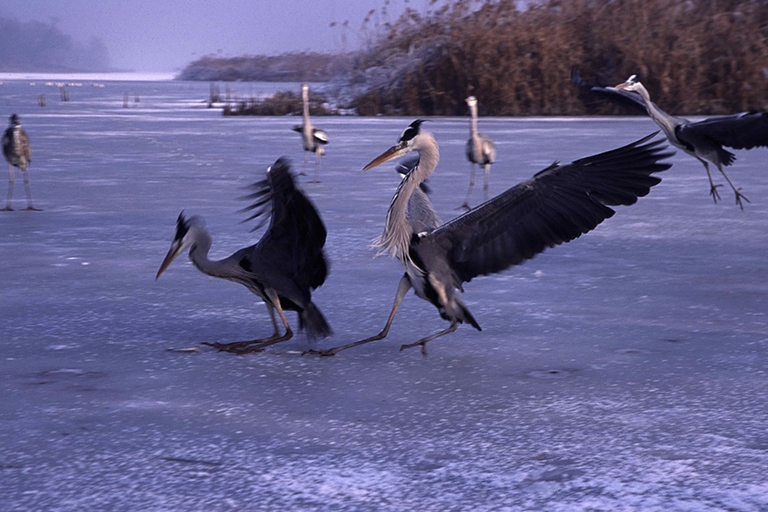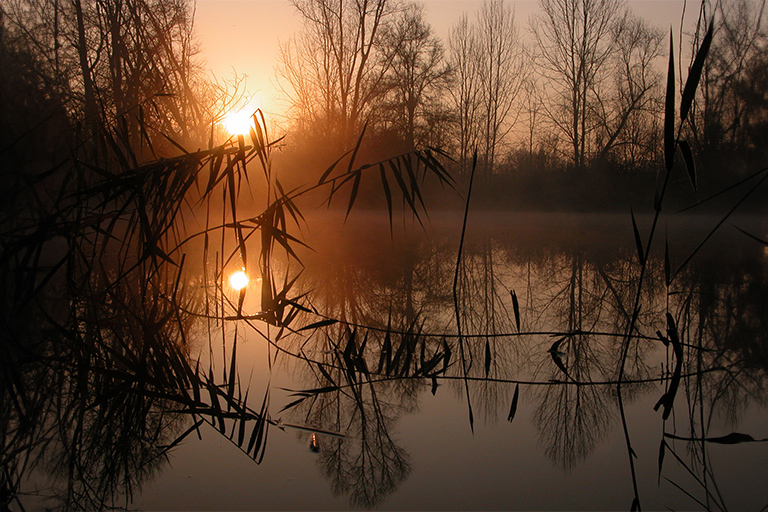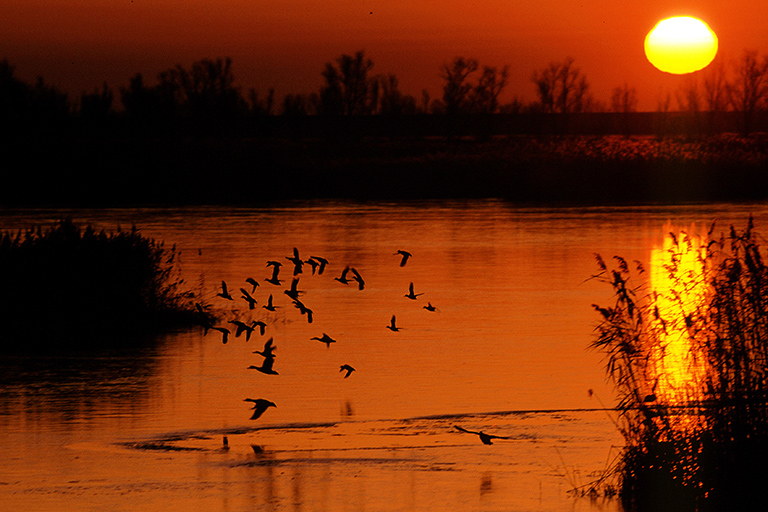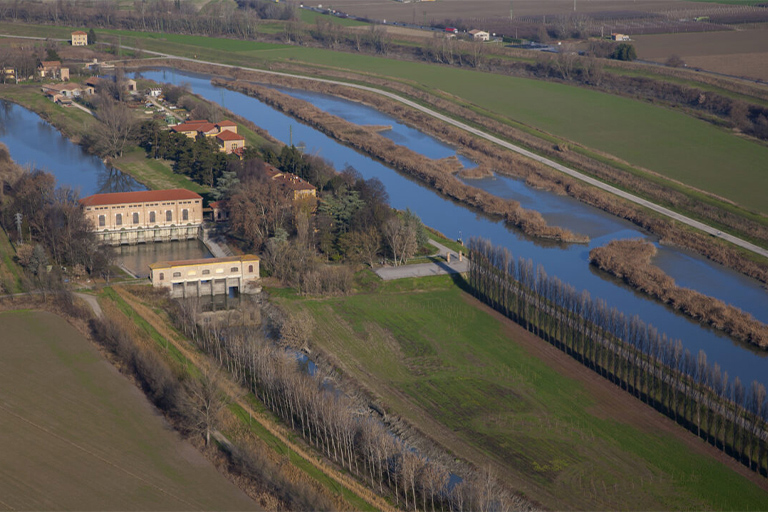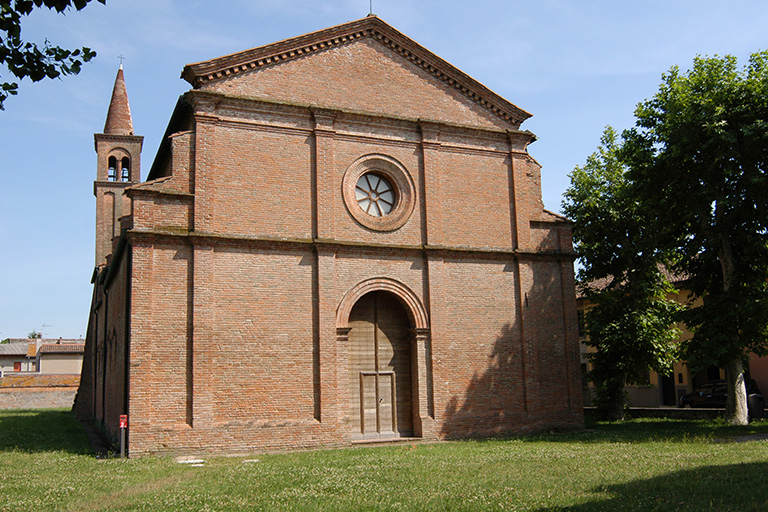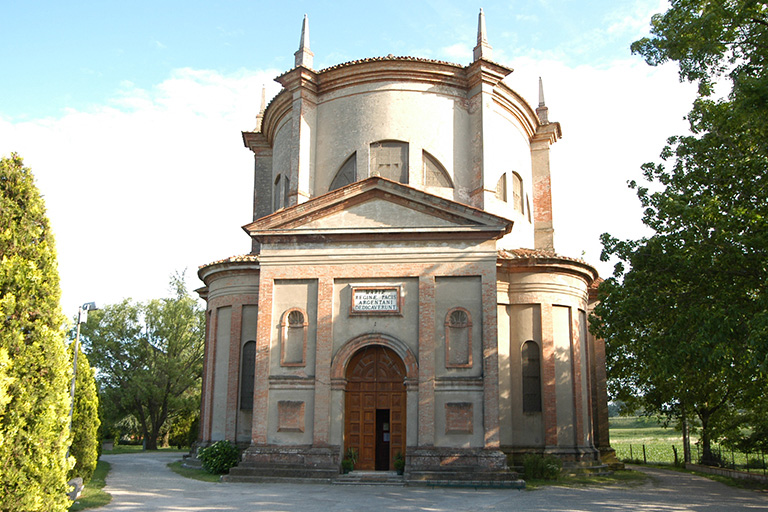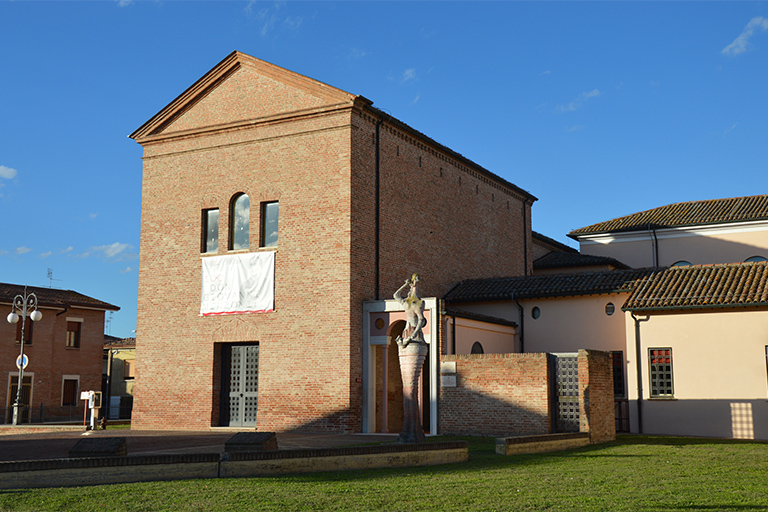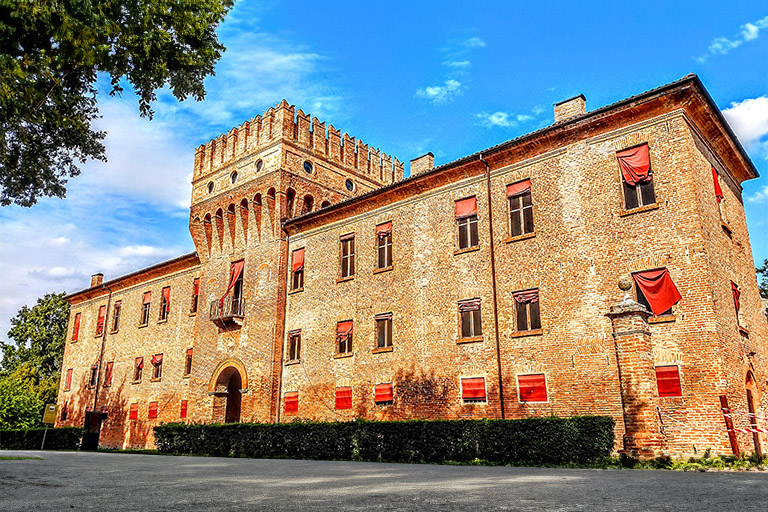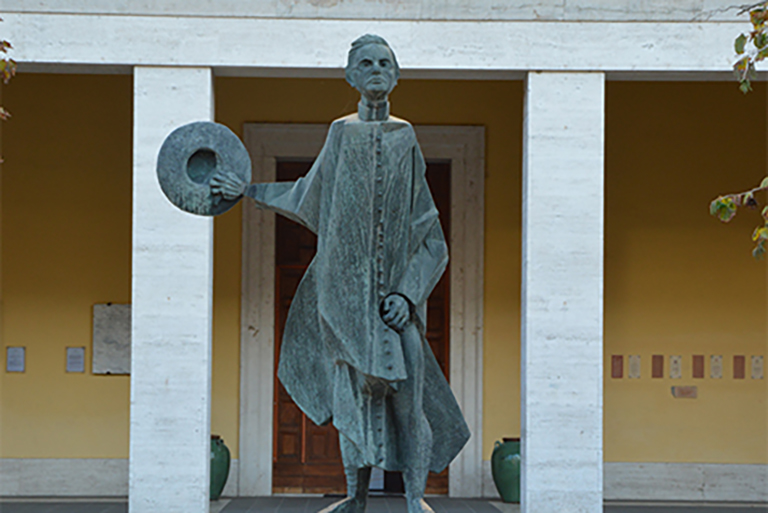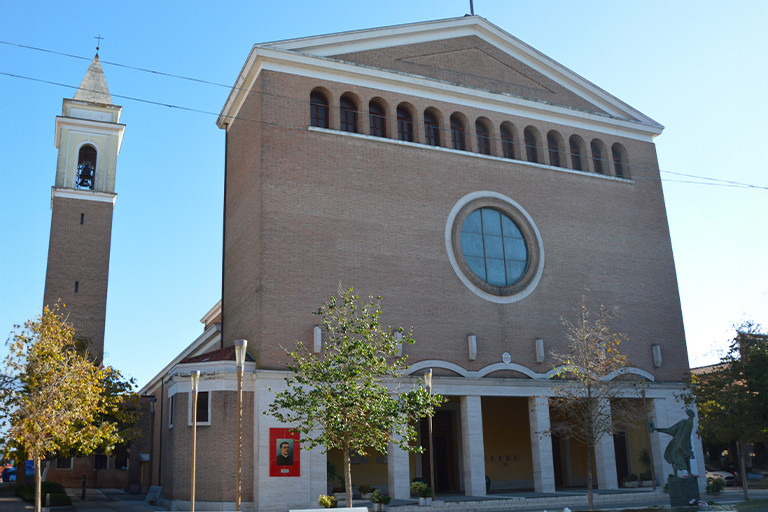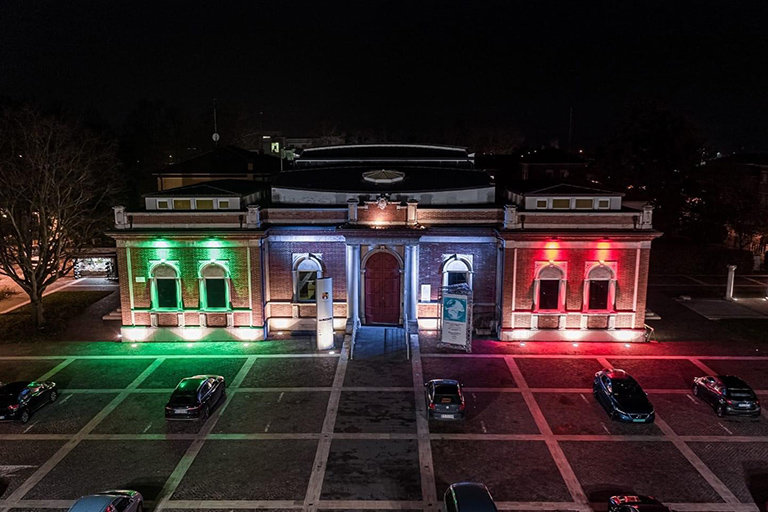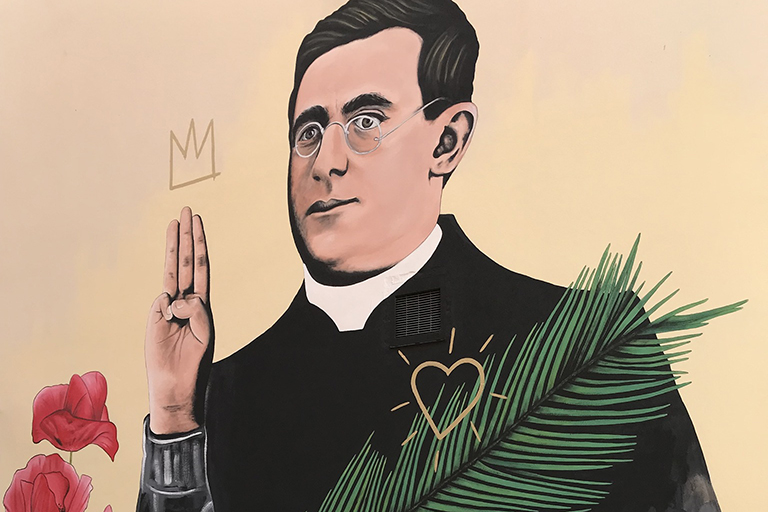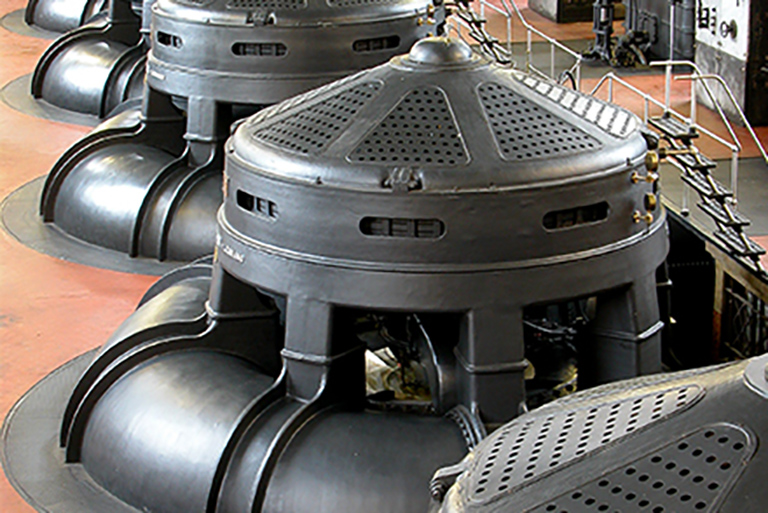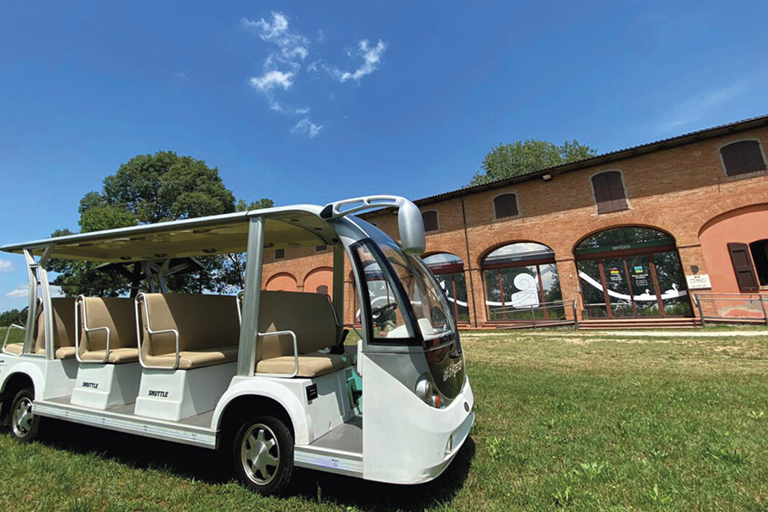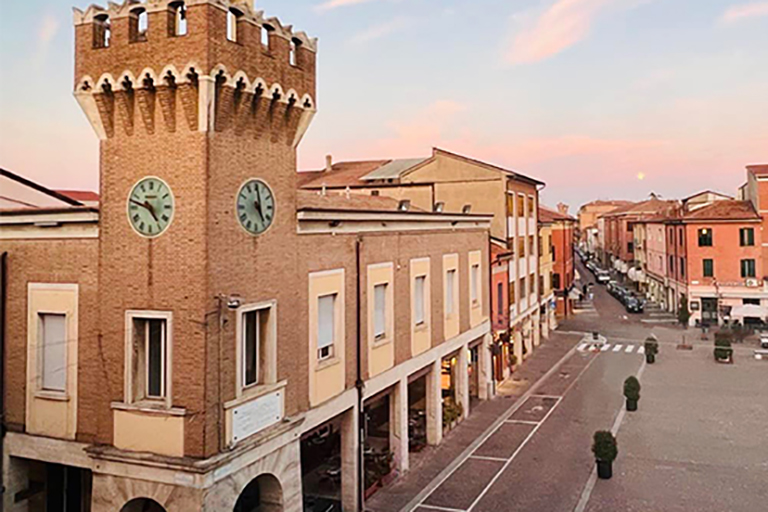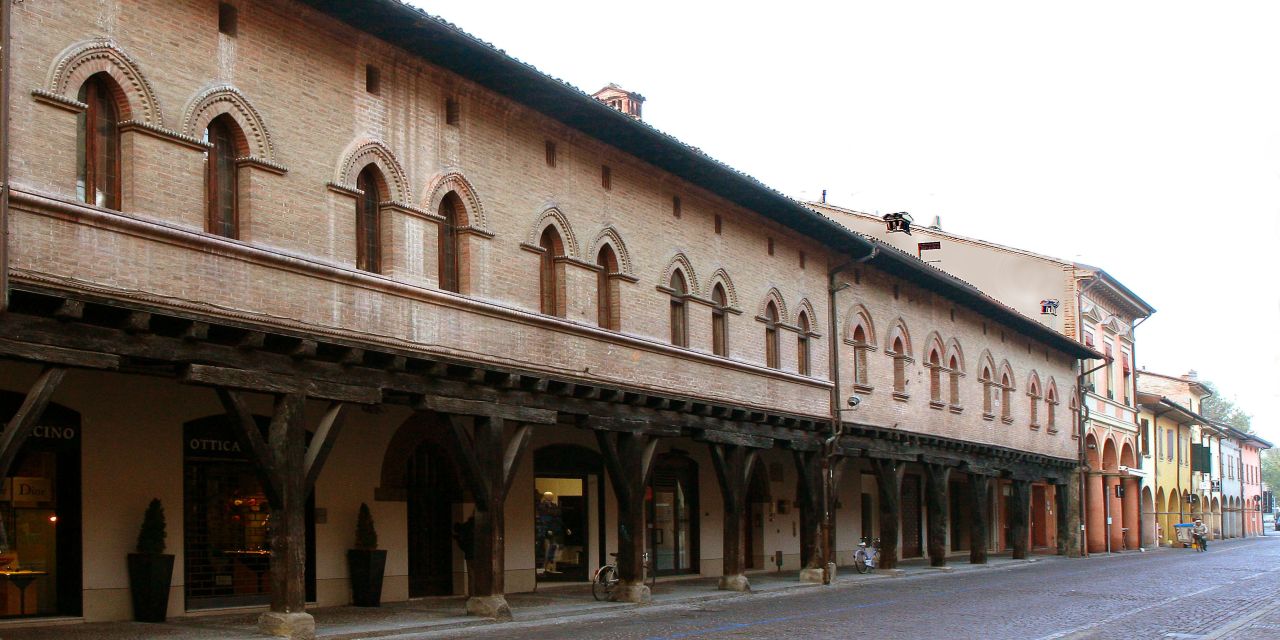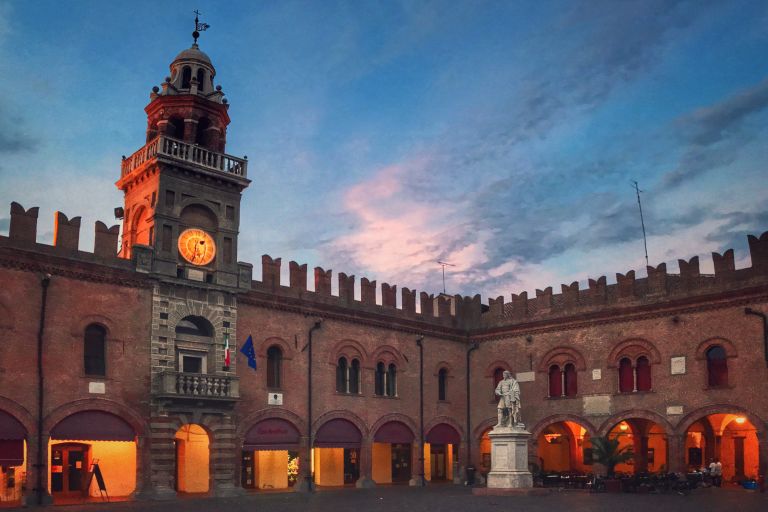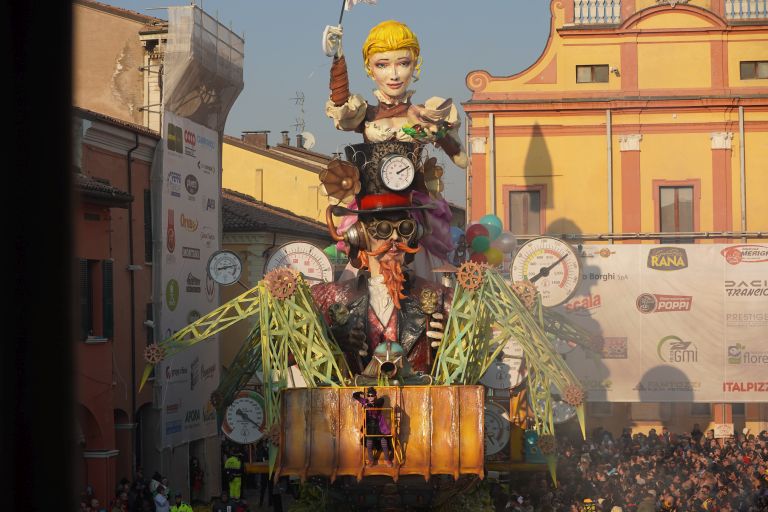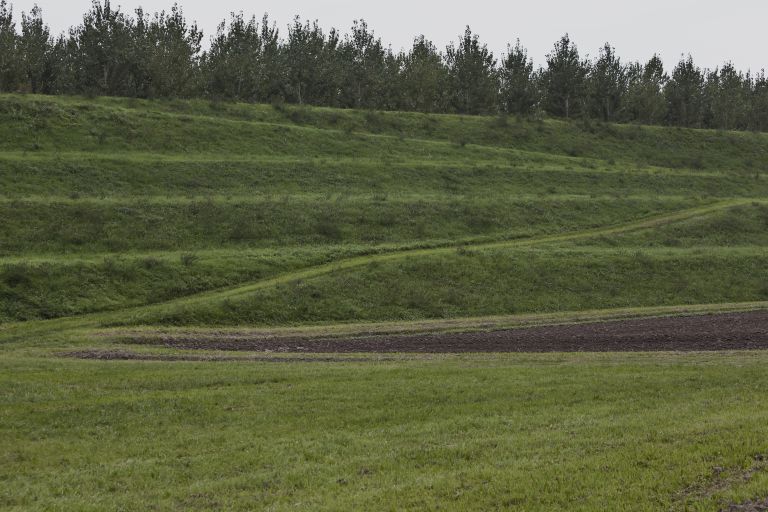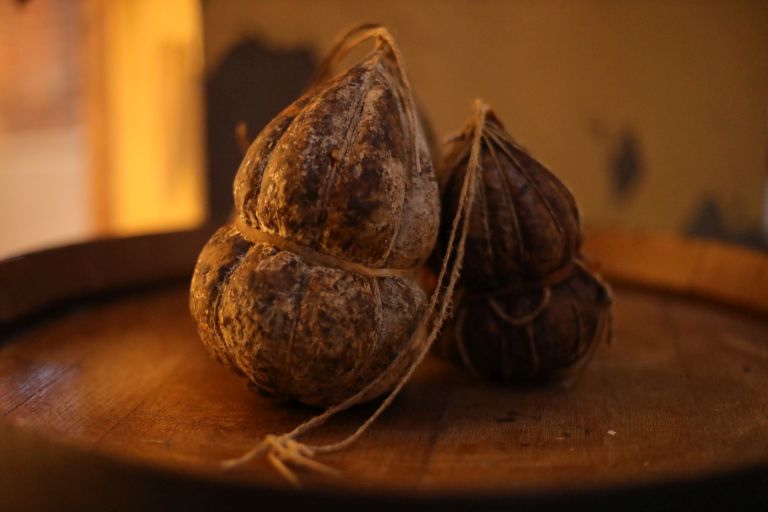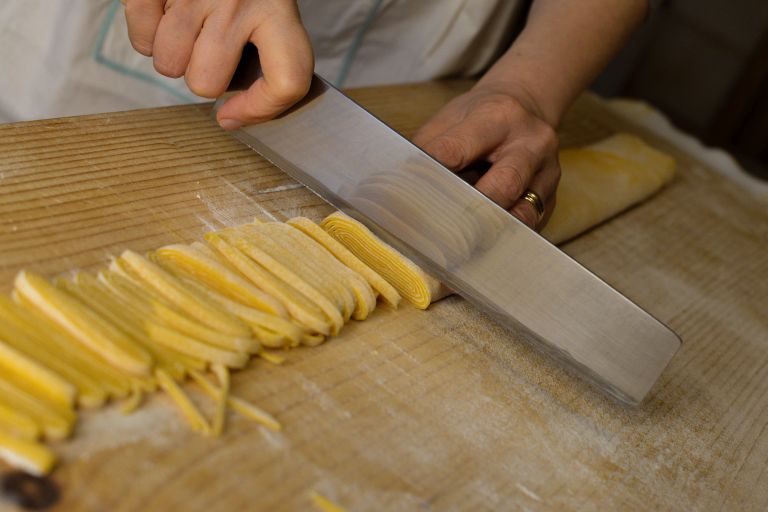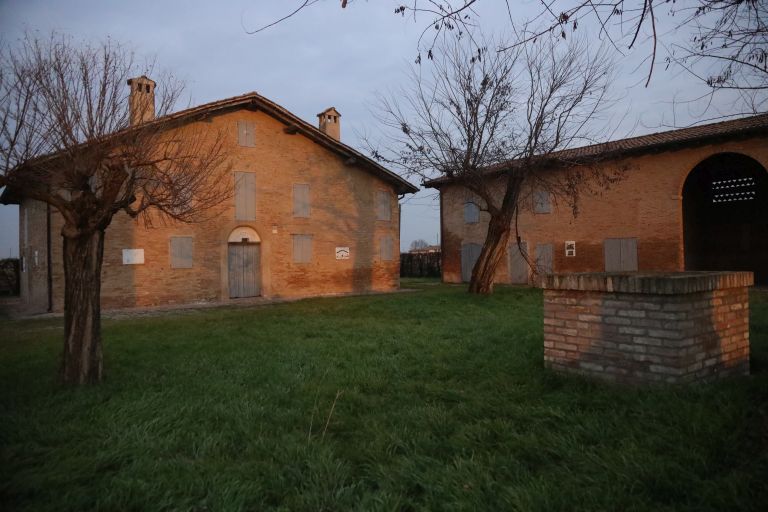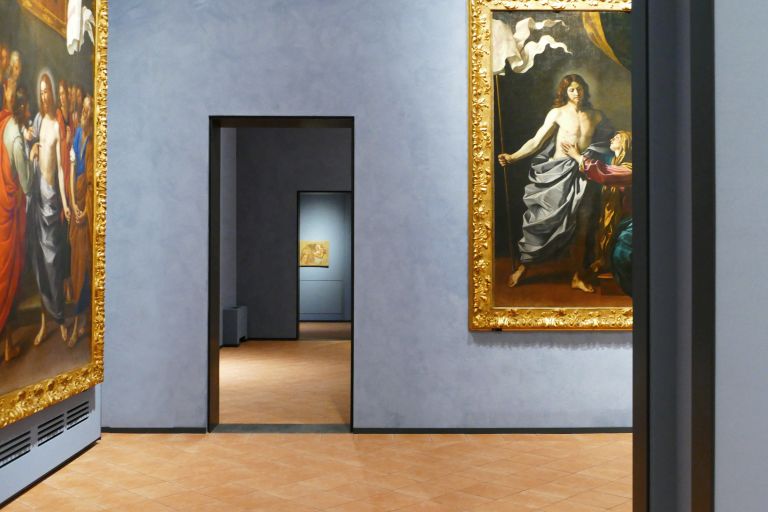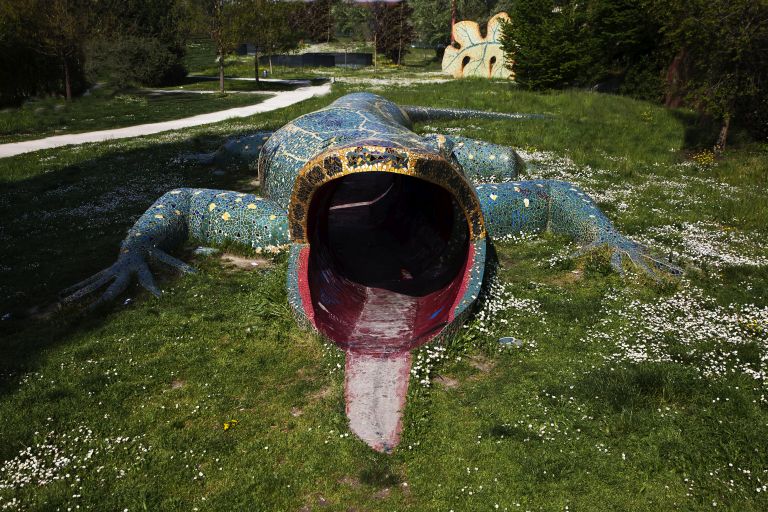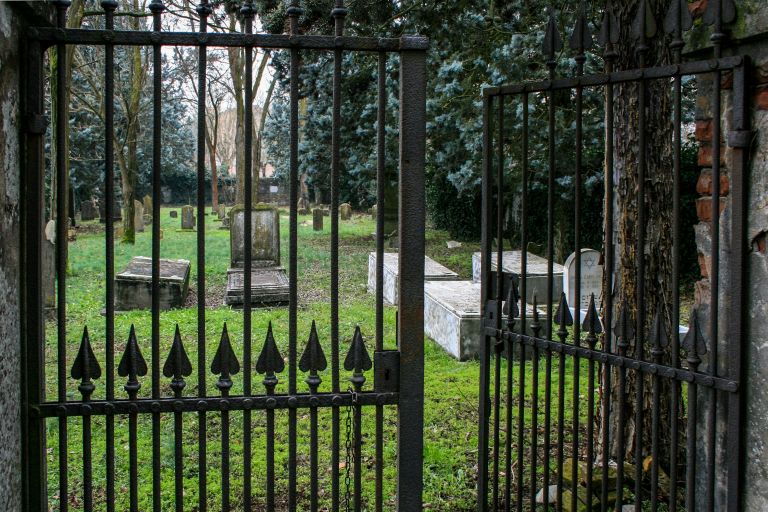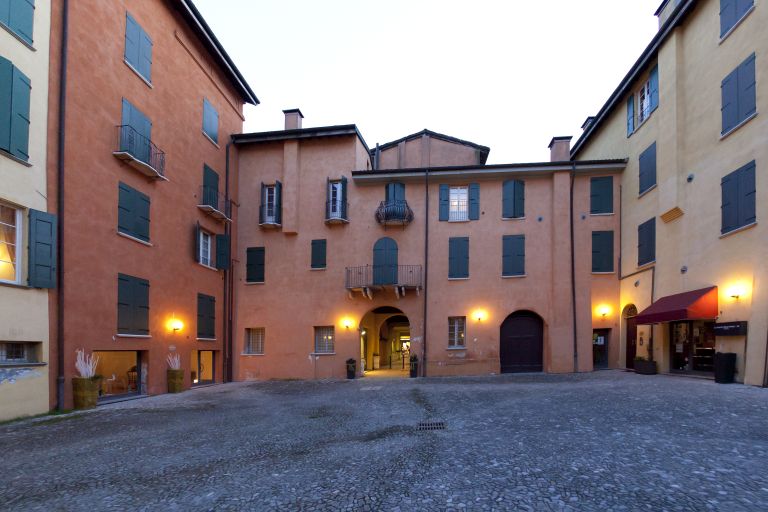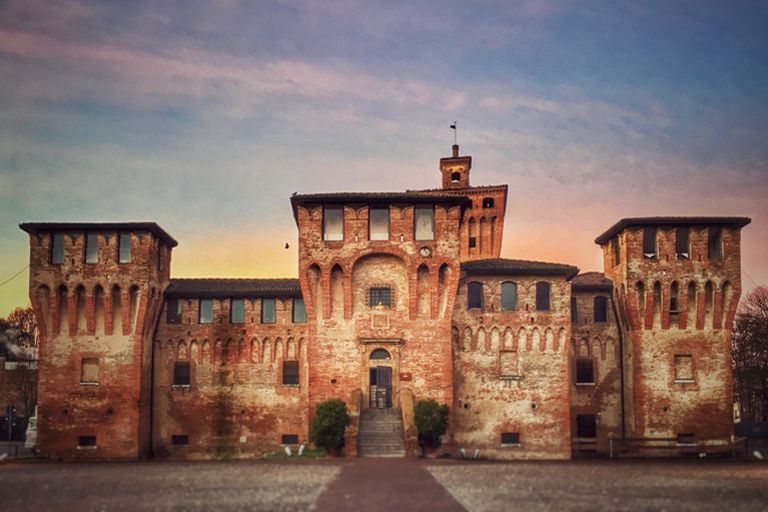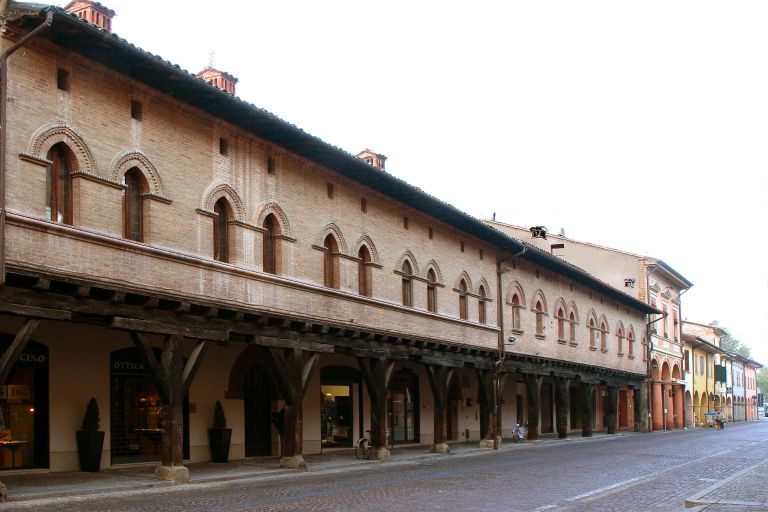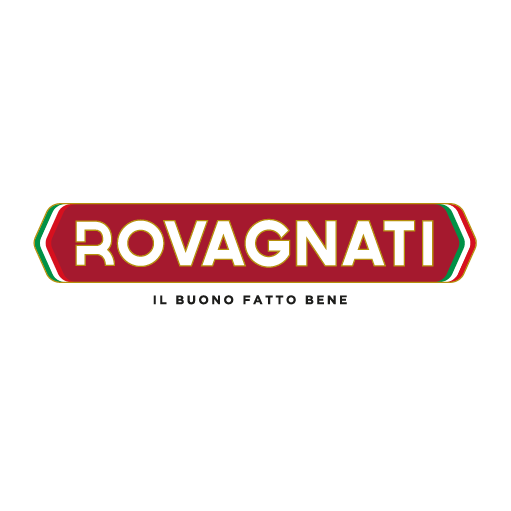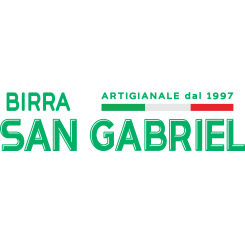profile
map
start / finish
itinerary timetable
tourist info
Host city:
Argenta
Overview
Argenta, one of the largest municipalities in Italy, stands in the center of a triangle formed by the cities of Ferrara, Ravenna and Bologna.
Its foundation dates back to Roman times, while archaeological findings give us a picture of a medieval settlement, a hub on the river routes from the Adriatic Sea to the hinterland via the southern branch of the Po, the Primaro.
The most accredited theory believes that the name Argenta derives from “rura argente”, the lands with silvery reflections, due to the reverberation of the waves and the sparkle of the silver leaves of the white poplar, a typical tree of ancient Padusa.
Land of ingenuity, home of Giovan Battista Aleotti, hydrologist and inventor between the Renaissance and the Age of Enlightenment, and of martyrs, such as Natale Gaiba and Don Giovanni Minzoni, promoters of syndicalist and Catholic social solidarity and killed by fascists it still keeps today its past as a marshy land in its valleys, among the largest freshwater wetlands in Italy, recognized of international interest in 1976.
Furthermore, Argenta is the Sixth Station of the Po Delta Park: an extraordinary oasis of biodiversity, cradle of a rare naturalistic heritage.
Gastronomy
Argenta’s cuisine has been able to grasp the suggestions coming from the nearby provinces of Bologna, Ferrara and Romagna, expressing its best in the “poor” dishes of peasant and valley cuisine.
Among first courses, egg pasta undoubtedly plays the protagonist role.
It is produced with the highly biodiverse grains and flours of the Mezzano Valleys. Dry proposal, in broth, in different formats and, in the tastiest version, stuffed: meat cappelletti in broth, pumpkin cappellacci with melted butter or ragù; but also potato gnocchi, risottos, baked lasagna, ravioli, the so-called “passatelli” in broth or dry, composed of parmesan cheese and grated bread, nutmeg and eggs. Today the tradition of producing fresh pasta is carried on by various artisan workshops that make it by hands using the traditional method and by numerous restaurateurs who offer it on their menus.
In the fresh waters of the Argenta Valleys, local catfish and eel are widespread, which are offered fried, stewed, or with risotto, alongside the proposals of sea fishes caught in the nearby Comacchio valleys.
Among preparations with valley game, we remember the folaga and duck risotto, an authentic gourmet dish.
As regards typical desserts, it is worth mentioning the tasty tagliolina cake: a baked dessert made with shortcrust pastry with almonds, lemon and the classic puff pastry tagliatelline made with eggs and flour (highlighted in Balestri’s triptych exhibited at the Civic Museum), cakes made with chestnut flour, the donut, jam tarts, apple and pear cakes, trifle, the donut, sugali, the “tamplun”, the apple pie, the pumpkin pie and the chocolate tenerina whose recipes have been handed down for generations.
Last but not least, we can’t help but mention Trigabolo, a gourmet restaurant active in Argenta between the 80s and 90s where, thanks to the originality and culinary experiments of chefs such as Corelli, Barbieri, Gualandi and many others, Italian gastronomy was born, deserving three Michelin stars (the last one awarded honorary after the closure) and making Argenta known throughout the world.
On the basis of this unrepeatable experience, “Saperi e Sapori” was born, a gastronomic event that took place in Argenta from 1990 to 1994, when the most prestigious chefs in the world took turns in its kitchen.
Drinks
The vineyards of Bosco Eliceo extend along the Adriatic coast, from the Po Delta to the salt pans of Cervia, embracing the Ferrara and Ravenna areas, all within the Po Delta Park.
The territory of Argenta has an agronomic vocation deriving largely from the passage of the ancient Primaro river, today Reno, which with its valley deposits has created a land over the centuries particularly sandy, where the so-called “sand wines” have found a perfect habitat.
Local producers have inherited this traditional knowledge, linked to the dune formations of the fossil Delta, innovating and creating an excellent product also aimed at Italian taste and abroad.
Studies, research and selection of land carried out in recent decades have led these wines to the recognition of the Controlled Designation of Origin in 1989, while since 1991, the Consortium for the protection of the DOC wines of Bosco Eliceo, through its brand, represents the elements that give typicality to the wines of the area and, involving the operators of the entire production cycle, guarantees the highest quality of the finished product.
History suggests that the cultivation of vines in this area has ancient roots, attributed to the Etruscans who resided in the city of Spina and subsequently to the Benedictine monks of the Pomposa Abbey. Decisive progress was promoted by the Este court: it is said that when Renata of France married Ercole II, Duke of Este, a vine known as “golden grape” was brought, originally from the Cote d’Or in Burgundy where the grape found an ideal habitat, to the sand dunes of the Po Delta. This wine spread widely and cultivation also continued for domestic use until the second half of the 20th century.
A detail that makes these wines even more special is their production from “ungrafted” vines, that is, from plants that have never been grafted onto American roots, a practice that became necessary when in the mid-19th century phylloxera, a parasite that arrived from America, destroyed most of the native vines.
In addition to the sandy soil on which they are grown, the humidity of the valleys and the mitigating influence of the sea are further factors that contribute to giving these products their typicality, in a place rich of stories of fishermen, hunters and farmers, where every sip of wine tells an important part of it.
Points of interest
The Argenta Valleys
The Argenta Valleys extend for 1624 hectares and since 1988, when the Po Delta Regional Park
was established, the area has been part of it as “station n°6 Campotto di Argenta”.
Various natural environments are present in the oasis: woods, wet meadows and expansion basins
recall the typical habitats of the past and offer free paths along the perimeter banks and guided
ones within the closed area of the Bosco del Traversante and the Campotto-Bassarone expansion
basins.
The history of the Valleys and of the great work that reclaimed these territories from the swamp is
told in the museum of Bonifica Renana, where there are the big Saiarino water pumps, still functioning
today, and in the Valleys museum, which presents an overview of the history of the territory
and life in the valley.
Pieve Church of San Giorgio:
The Pieve Church of San Giorgio is the oldest monument in the area of Ferrara (569).
The imposing portal with the cycle of the months and with the martyrdom of Saint George in the
lunette dates back to 1122, the work of Giovanni da Modigliana, and was built with marble remains
from Roman funerary monuments.
Celletta Sanctuary:
The Sanctuary was built at the beginning of the 1600s to cope with the growing number of faithful
who began to flock in this place following the Holy Mary apparition.
The first project was entrusted to the Argenta’s painter-architect Balestri and later completed by
G.B. Aleotti.
Severely damaged in 1945, it was restored in 1954.
The works previously placed here, such as some paintings by Garofalo, are now exhibited in the
art gallery of the city civic museum, to which is added an archaeological section and the collection
of graffiti ceramics.
Este Delizia of Benvignante:
Ancient “Estense Delizia” commissioned by Duke Borso d’Este.
With the fall of the Este family, the Delizia also fell into ruin, passing from hand to hand until the
19th century when it was purchased by Count Luigi Gulinelli.
Since 1990, it has been taken over by the Municipality of Argenta and is part of the valorization
heritage of the Ecomuseum, while since 2000 the Delizie Estensi including Benvignante, have
been declared a World Heritage Site by UNESCO.
A renovation is currently underway to make it accessible internally as well, with the aim of including
it in the Delizi Estensi circuit.
Cathedral of San Nicolò:
The first certain date we have is that of its consecration, which took place on 23 January 1122.
In the mid-1200s the baptismal font was transferred from the Pieve Church of San Giorgio.
Around 1500 it was enlarged and was consecrated in 1577.
Completely destroyed in the bombing of 1945, rebuilt after the war, the new church was inaugurated
in 1954.
Inside we can find the tomb of Don Giovanni Minzoni, which was moved to Argenta in 1983.
Monument of Don Minzoni and museum:
The monument, a bronze work by the Faenza sculptor Angelo Biancini, was inaugurated on 13
October 1973 by the President of the Italian Republic Giovanni Leone, for the fiftieth anniversary
of the death of Don Minzoni.
The life of this extraordinary priest and educator, killed on the evening of 23 August 1923 by fascist
hitmen in Argenta, is narrated in the museum dedicated to him. Here are exhibited memorabilia,
panels that report the most important events of his life and his operations
as lieutenant chaplain of the 255th infantry regiment and the detailed description of the 11 medals
received during the Great War.
Cento
Overview
Cento is synonymous with Carnival, one of the most famous and oldest in Europe! This festival was already well-known at the beginning of the 17th century, when the artist known as Guercino painted scenes of the costume party held in the town square. Radical changes have taken place since then, but Carnival remains an unmissable event that has been transformed over time to keep the enthusiasm alive.
Local cuisine
Salama da sugo di Buonacompra IGP: egend attributes an important role in reconstructing the product’s origins to Lucrezia Borgia, who married Alfonso d’Este in the early 1500s. The first written records of products very similar to ‘Salama da sugo’ date back to the Renaissance period.
Points of interest
- Rocca: this imposing defensive structure was built in 1378, at the behest of Bernardo di Bonnevalle, bishop of Bologna, as a brake on the ambitions of autonomy of the people of Cento. It was rebuilt and renovated over the centuries to meet the most modern standards of military architecture and to withstand repeated assaults by enemy troops. At the end of the 18th century, the structure, by then in decay, was turned into a prison, a function it had already sporadically performed since the 16th century. Today, the interiors are completely restored and feature rooms of artistic or historical interest, such as the fireplace room, the chapel, the triforium room, the embrasures, the dungeons.
- Piazza del Guercino: the beating heart of city life and a thermometer of popular moods, Guercino Square hosts the most important cultural, religious and folklore events in town. Two important porticoed buildings of great historical and artistic value, the Town Hall and the Governor’s Palace, form the backdrop to the square.
- The Art Gallery: after having been closed for more than ten years due to the earthquake that struck the Emilia region in 2012, the “il Guercino” Civic Art Gallery is now the main cultural venue in Cento. It houses the largest collection in the world of masterpieces by illustrious local artist Giovanni Francesco Barbieri, known as ‘il Guercino’ as well as his old workshop.
- Giant’s Park: the Giant’s Garden is a masterpiece of environmental art, set in a public green area in the municipality of Cento. Its story originated from the imagination of a little girl, and became reality thanks to the creativity of artist Marco Pellizzola, the collaboration of numerous students from the Academy of Fine Arts, and the contribution of various sponsors. The work features a 33-metre lizard stretched out on the lawn, a leaf measuring 5×12 metres rising towards the sky, a 13-metre blackbird perched on a small hill… and then shooting stars, small fish, flowers and water lilies, dozens and dozens of birds escaped from their cages, signs, symbols and fragments of dreamlike architecture inspired by the natural world, for a fast-paced sequence of shapes and images coloured by thousands of ceramic mosaic fragments.
- The Carnival of Cento: recognised as a National Historic Carnival by the Ministry of Culture and as a Regional Historic Carnival by the Emilia-Romagna Region. The undisputed protagonist is the parade of allegorical floats, enormous papier-mâché monuments up to 20 metres high, resulting from the long and skilful craftsmanship of the masters of the five Cento Carnival Associations. While the colourful costumed figures and characters accompany the parade, a rainbow of prizes and gifts is poured onto the public from the highest towers of the floats. The carnival concludes with the reading of the “Will of TASI”, the traditional mask of Cento, and the ritual burning of the straw and papier-mâché puppet that represents him.


